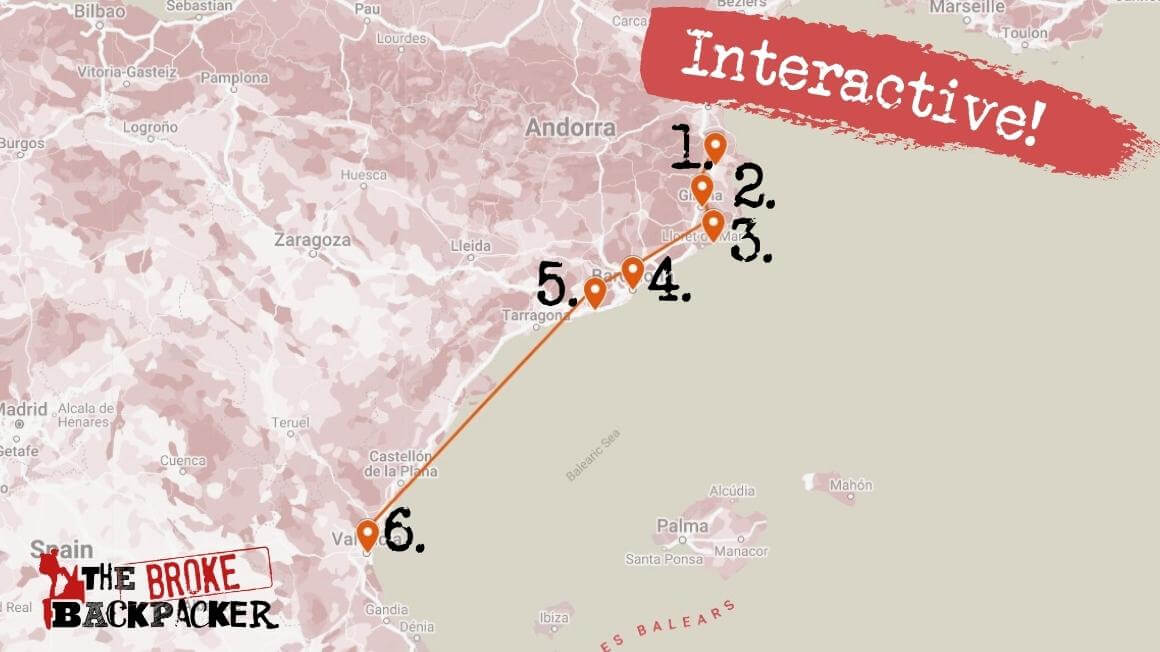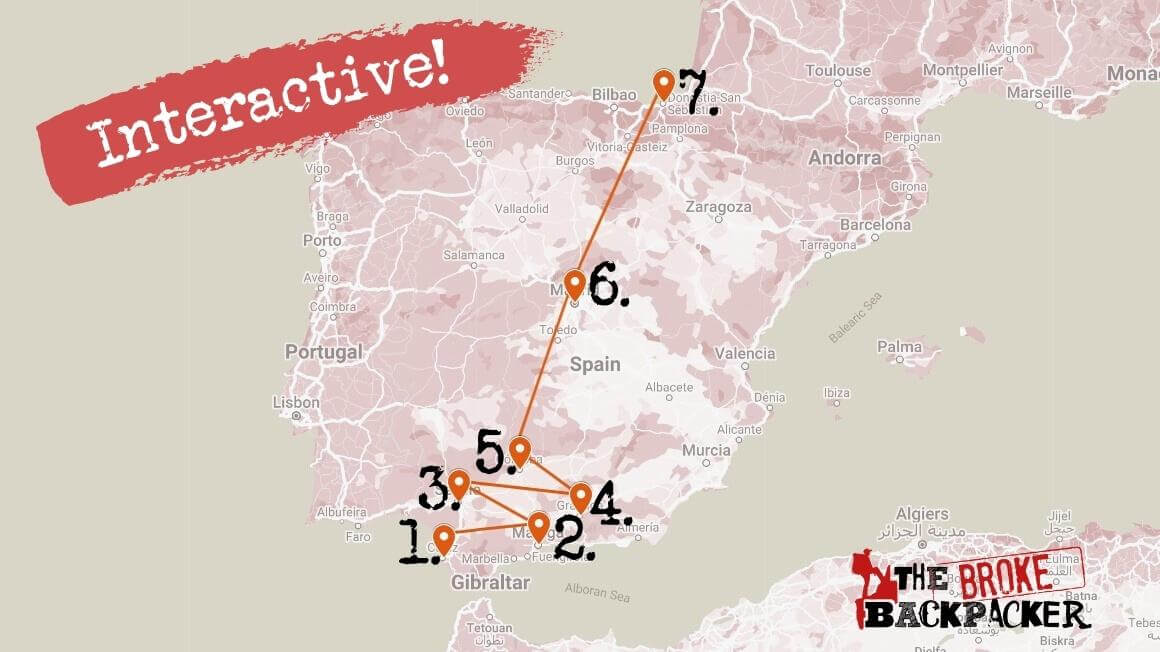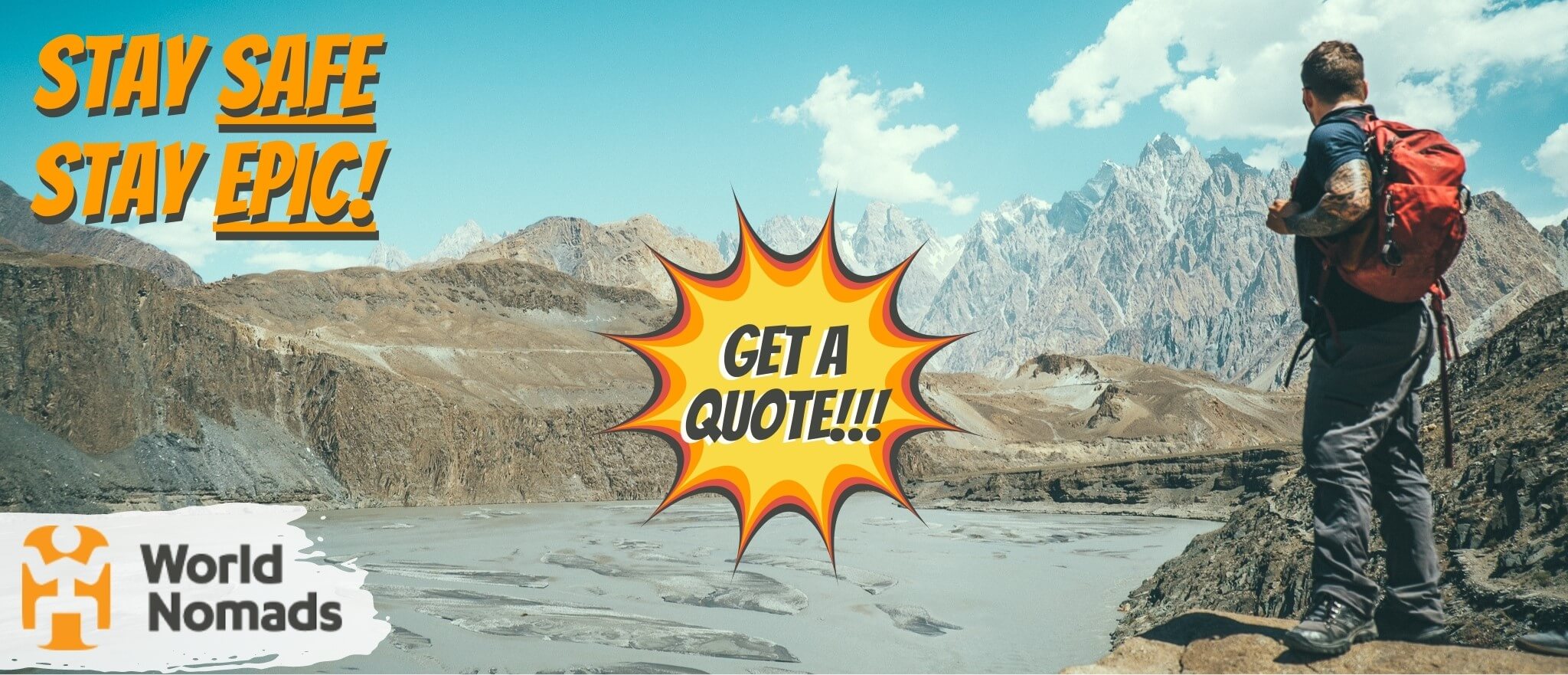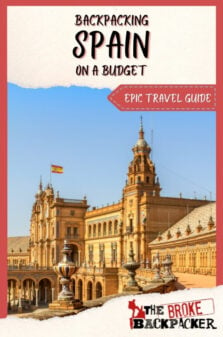Backpacking Spain is no secret. It’s well established on the travel trail around Europe.
Adventures in Spain start with lazy days on the beach, afternoon tapas, evening espressos, and fiestas all through the night. Somehow, you get up the next day to seek out Mediaeval and Moorish architecture, narrow cobblestone alleyways, and quaint, whitewashed villages.
Over my years of travelling, I always find my way back to Spain. The forces of attraction and passion are too strong! It offers oodles of diversity, relaxation, and adrenaline.
Many travellers barely make it out of their little tourist hubs in Spain. They’re usually stuck in the two (mighty fine) major cities: Barcelona and Madrid. Or, perhaps they’re trapped in their all-inclusive hotel in Costa Del Sol.
Yet those that do venture out into Spain’s benevolent country are rewarded time and time again. The diversity is drastic and the country encapsulates high spirits. If you have more than 2 weeks for backpacking Spain, get yourself out there and see it with your own eyes.
Travelling in Spain is WAY better when you start making your own Spain itinerary and experiencing unique encounters. In this backpacking Spain travel guide, we’ll talk top travel tips for Spain, travel costs, and the lowdown on Spanish traditions to get your teeth into.
Vale, amigos. Vamos a España!

Why Go Backpacking in Spain?
If you’ve ever even considered travelling through Europe, Spain will almost certainly come up on your radar. This country has delight after delight for every kind of traveller.
If you want to laze on the beach, maybe dip your dedos in the warm Mediterranean Sea, you have it. You can bounce around big cities where the days and nights blend into one, or explore history that’s deeply ingrained in the country from tip to toe.
The food is mind-blowingly delicious. The wine is rich, free-flowing, and cheap.
Basically, this country is one of the best all-rounders in the world. It’s a perfect choice for newbie backpackers, solo travellers, families, and even the most experienced travellers have a lifetime of places to explore. It’s, quite frankly, a rarity.
Beyond the famous beaches of Costa Del Sol and major cities, you find charming villages and dazzling nature. The deeper you dive, the more you uncover.
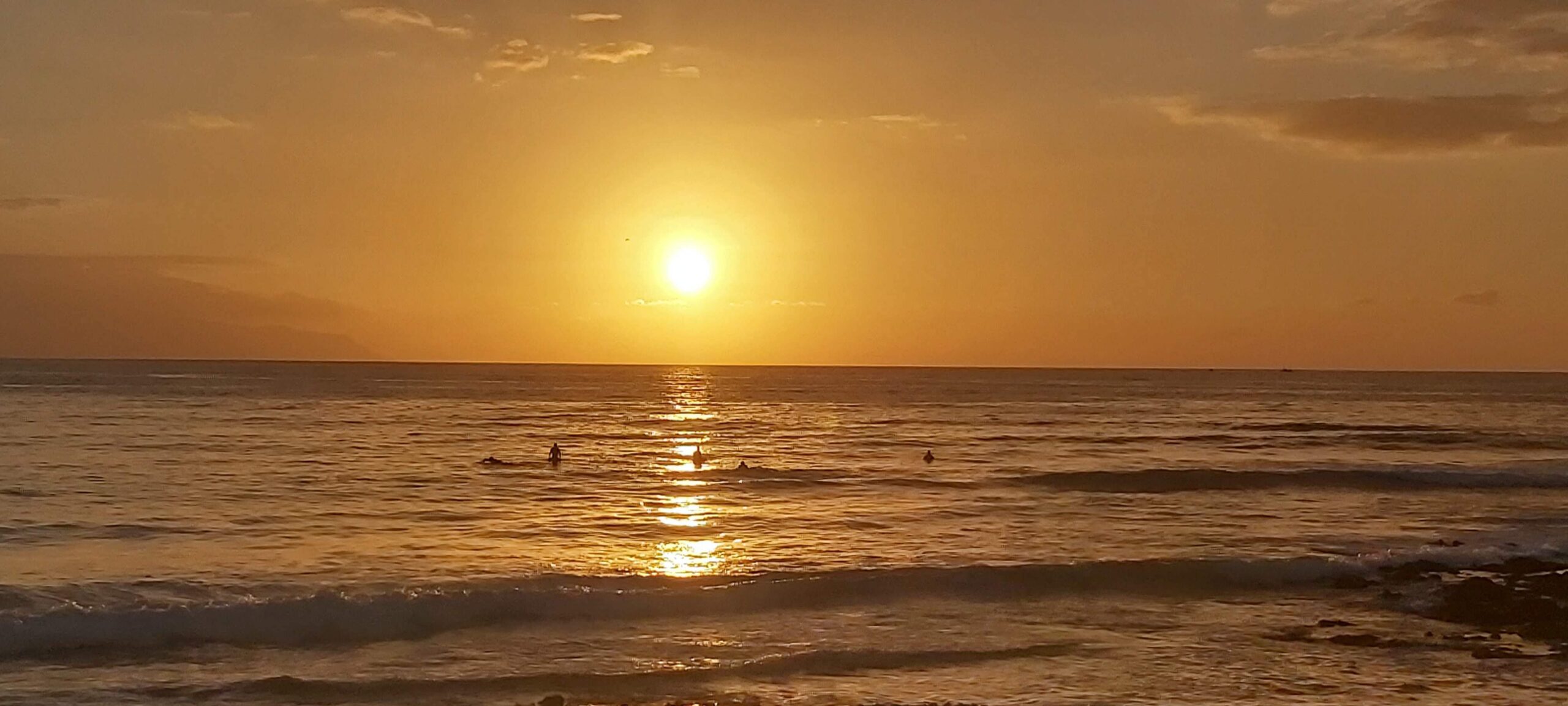
Photo: @Lauramcblonde
I spent a lot of time on both mainland Spain and – luckily for me – Spain’s beautiful islands too. One thing that backpacking Spain offers the most is the stunning diversity of the different regions. If you ask the Spanish too, many insist they are completely separate nations too, even speaking different languages.
I think the best part about backpacking Spain is experiencing Spain’s uniquely different regions: the rebellious Basque Country, laid-back Andalucía, lush-green Galicia, and more.
Isn’t that why we travel, after all? To experience something different, because we’re curious about the lives and landscapes of other terrains? When you visit Spain, you are gifted with variety, good weather, and welcoming people.
So let’s talk about regions in Spain. Damn, I hope this is going to give you some worthy inspiration for your routes and itinerary for Spain.

Heading Off-Grid? • Download This Guide as a PDF!
Sign up to The Broke Backpacker’s EXCLUSIVE VIP AREA below and download our top backpacking guides as PDFs – go offline with peace of mind!
- Best Travel Itineraries for Backpacking Spain
- Best Places to Visit in Spain
- 9 Top Things to Do in Spain
- Backpacker Accommodation in Spain
- Spain Backpacking Costs
- Best Time to Travel to Spain
- Staying Safe in Spain
- How To Get Into Spain
- How To Get Around Spain
- Working in Spain
- Spanish Culture
- What To Eat in Spain
- Some Unique Experiences in Spain
- FAQs About Backpacking in Spain
- Final Advice Before Backpacking Spain
For travellers far and wide, it’s worth making the effort to visiting Spain’s varying regions. It’s a large country in comparison to other European countries. Yet, with reliable transport, you don’t need to stress much.
I have broken down some of the best backpacking routes for your Spain itinerary. If you’ve got less than 2 weeks, I recommend sticking to one area or a few cities and spending more time exploring it properly.
10-Day Travel Itinerary for Spain – Barcelona and Beaches
If you’re short on time, one of the most exciting regions to visit is Catalonia. Barcelona makes an easy landing spot if you’re arriving by air. From there, you can head into surrounding beaches and mountain towns on day trips – or stay a while and get to know them.
If you’re arriving from France, I suggest stopping by Figueres for the Salvador Dalí Museum. This was the Spanish icon’s home.
Then, head down to visit Girona, a city full of Gothic churches and cobblestone lanes. You can easily visit Girona as a day trip from Barcelona too, but it’s worth spending a couple of days. Plus, there is a sick nightlife scene.
Within an hour of Barcelona, you can visit Tossa de Mar – a beautiful bay with a towering castle, and Tamariu – a quaint coastal village. Make sure you leave yourself with plenty of time to explore Barcelona. There’s a lot to do here so plan your Barcelona itinerary well.
Barcelona is known for its beach, but they’re mediocre compared to the rest of Costa Brava, and the Mediterranean islands. So, I suggest concentrating your time on the more unique places to visit in Barcelona and save the beach for coastal towns.
If you have time on your itinerary, take the trip to Valencia. This jaw-droppingly beautiful city is worth making time for. You could stop by the fun beach town, Sitges, just 30 minutes south of Barcelona.
2-Week Travel Itinerary for Spain – Top to Bottom
With 2 weeks, you’ve got enough time to quickly cross Spain from top to bottom, and stop in some insane travel destinations. One of the best 2-week backpacking routes kicks off in Southern Spain. This is ideal if you’re backpacking Spain and Portugal, or you’re arriving from Morocco.
Start in Spain’s amazing southern cities. Visiting Málaga, the white city by the Mediterranean Sea, is convenient. It has the biggest airport in Southern Spain, so this could be the easiest city to fly into.
If you’re arriving on a boat from Morocco, you’re probably going to start your route in Cádiz. We spontaneously visited this city by the beach and it was a great surprise. Tarifa is famous for its kite surfing and has some awesome backpacker hostels to stay in.
Or, if you’re heading in by land from Portugal, Seville could be your first stop. If your itinerary allows it, visit Ronda and the other whitewashed villages in this area.
Visiting Granada for a few days is really worth it. There is so much to do and see. Granada’s Alhambra and Córdoba’s Mezquita are two must-see attractions in Andalucía. Get ready for beautiful views and free tapas!
You could do a quick stop in Córdoba. One day is sufficient if you’re short on time.
Then, you’re ready to head to Madrid. You’ll want to set a few days aside for the capital city. From there, you’ve got one of the most well-connected airports in the world. So you can basically go wherever you want! If you’re heading onto France, San Sebastián will probably be your last stop for surf and sun.
2-Month Travel Itinerary for Spain – The Full Flamenco
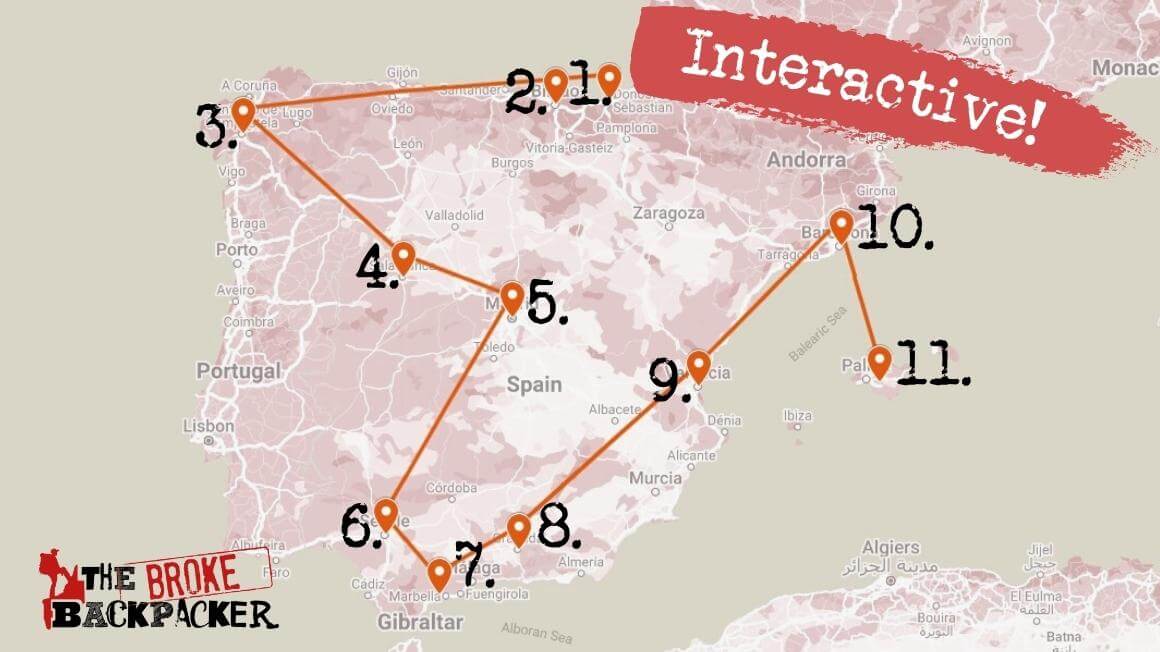
Now we’ve got some time on our hands, we can do a nice little circuit on this Spain itinerary. So it doesn’t matter where you start or which direction you go. You can pretty much combine the last two itineraries, and let’s throw in some other goodies too.
With more time, I highly recommend doing the Camino de Santiago – one of the most iconic hikes in the world. This is also great if you are backpacking Spain and Portugal or France. If you’re really serious, you could walk from Portugal or France!
So you could arrive in San Sebastían, walk through Bilbao, and arrive in the gorgeous Santiago de Compostela.
If you’re not walking from Bilbao, check out the beautiful town of Oviedo and stop by Santillana del Mar in Cantabria – a perfectly preserved mediaeval town. You can also take a day trip to La Rioja, Spain’s most famous wine region!
If you visit Spain in the summer, set some time aside for the coast of Galicia. Check out Coruña and Costa da Morte.
Stop in the magical city of Salamanca for a great vibe and nightlife, thanks to the university. It’s also a convenient stop on your way to Madrid.
Then, follow the last itinerary through Southern Spain, passing into Andalucía through Córdoba, Seville, and Granada. Spend some time on the golden beaches of Costa Del Sol.
Next, you can make your way up the Eastern coast to charming Valencia. Sample some paella for a few days. Then, take a train or bus to the energetic and bustling city of Barcelona.
If you have time, you can take a ferry to the Balearic Islands which are really closely connected to Barca, stay in Menorca for a while before you party hard in Ibiza.
Spain is an absolute treat of a country for backpackers. It’s one of the best places to travel alone, as well as with your family, as a couple, or with friends!
We’re talking major cities, major chill-out locations, and all-day, all-night parties. First off, let’s talk about some of the popular destinations and top spots that have been drawing people to visit Spain forever.
Backpacking Madrid
Spain’s capital, Madrid – obviously one of Spain’s bustling major cities. You’re going to need to set aside at least a few days to appreciate it properly.
Travelling in Madrid doesn’t have the immediate grandeur of Paris and Rome. But it does have the art scene, nightlife, and insane restaurants to easily compete. Puerta Del Sol is the plaza sitting proudly in the heart of the city centre.
Most of Spain’s best art museums are in Madrid, including Museo del Prado and El Centro de Arte Reina Sofía. Check out masterpieces by Pablo Picasso and Salvador Dalí.
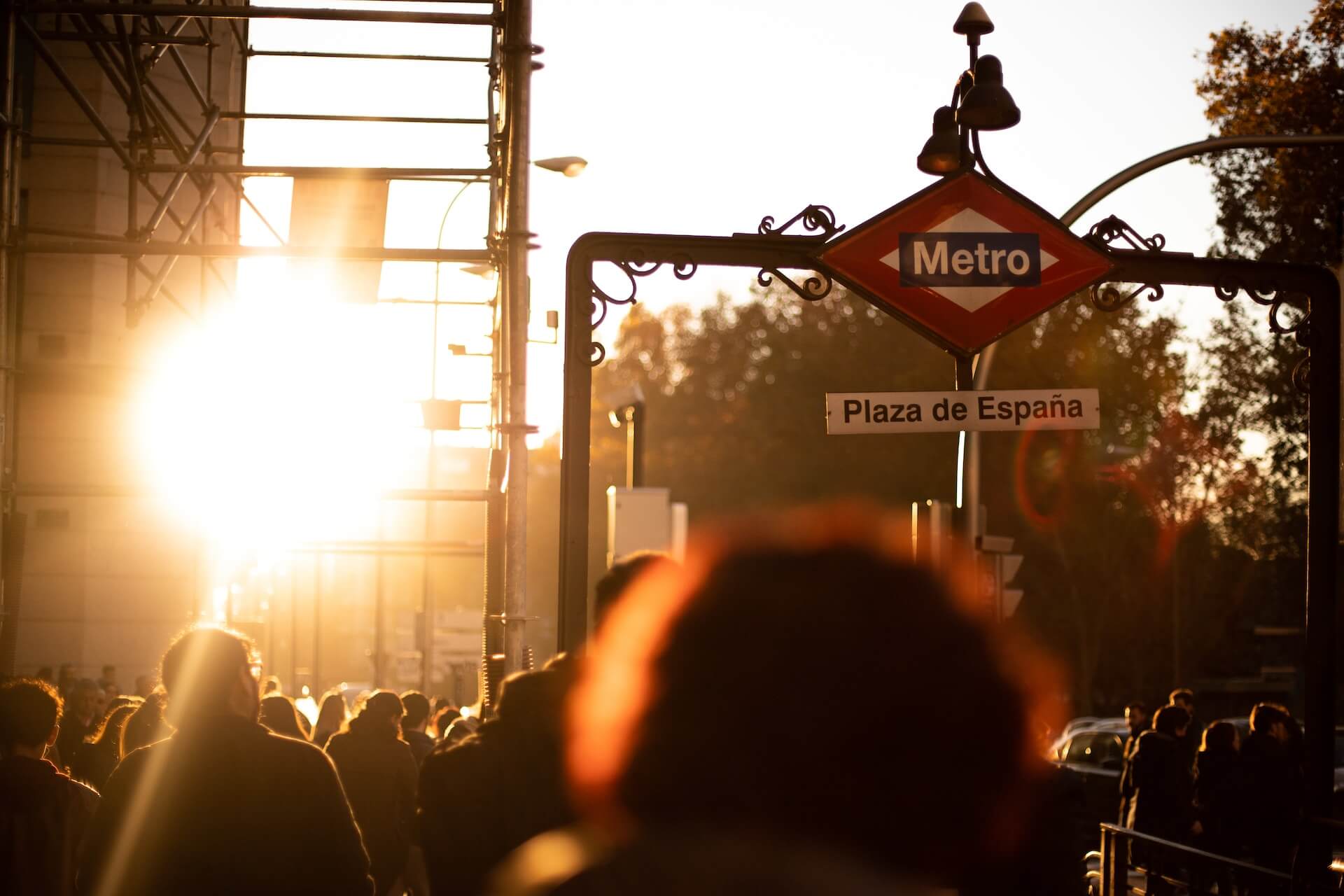
El Rastro is Madrid’s famous Sunday flea market; go if you are visiting Madrid on a weekend. El Retiro is a great park to spend a sunny afternoon. Just watch out for annoying rollerbladers – unless you wanna take part – it’s less annoying then.
Madrid’s nightlife doesn’t really start until 3 am. From live venues and wall-to-wall bars to multi-story clubs, there is always something going on. The best party districts in Madrid are Huertas, Chueca, and La Latina.
La Latina has restaurants and tapas bars galore. Malasaña is another neighbourhood with great cafés. Mercado de San Miguel is a fun market to taste different Spanish dishes and get wine drunk.
Sungate One hostel is one of my favourite places to stay in Madrid. This hostel draws me back again and again.
Backpacking Barcelona
I have a love/hate relationship with Barcelona. If you’re visiting Barcelona for a weekend, or you’re a city person, Barcelona is your jam. You’re gonna love this place.
You have a city with deep-rooted history and a modern mindset. Behind you are mountains and ahead, long golden beaches and Mediterranean Sea. How many other places have a claim like that?
There is an endless list of things to do in Barcelona. Even the most busy-minded traveller need never rest.
Cobblestone lanes of the Gothic quarter, world-class architecture, dancing from bar to club. Rave all night long. Hang out at a beach club.

Photo: @Lauramcblonde
Watch a classical concert at the Palau de la Música Catalana. The Picasso Museum is supposed to be lovely, but I never made it for the queues. If you’re a footy head, watch a match or take a tour at Camp Nou.
Check out the viewpoints for the sunset over Barcelona. I highly recommend Bunkers. Bring food and wine!
And I have to mention Barcelona’s hero: Antoni Gaudi. His unique and inspiring creations are all across the city. Cast your eyes on the iconically ever-incomplete La Sagrada Familia.
Park Güell lives up to its reputation! Parc de la Ciutadella is a beautiful park but – in my experience – it’s one of the most unsafe areas of Barcelona: pickpockets are RIFE!
If you’re backpacking Spain on a budget, I recommend staying away from the famous La Rambla. It’s too touristy and overpriced.
My favourite neighbourhoods to stay in Barcelona are the Born, Gothic Quarters, and Gracía. Ravel is rough around the edges but has cool vibes.
Though, Barcelona is increasingly expensive, year after year. Now, when I visit, I Couchsurf to cut the insane accommodation costs. (Damn you, beautiful Airbnbs.)
If you are backpacking Spain during summer, it pays to plan ahead. It’s getting kinda mainstream and, therefore, expensive.
Day Trips from Barcelona
There are plenty of day trips you can take from Barcelona. Montserrat is known for its “sacred mountain.” Maybe you’ve seen the stairway into heaven?
Girona is a quaint medieval town with an interesting history. Tarragona has Roman ruins.
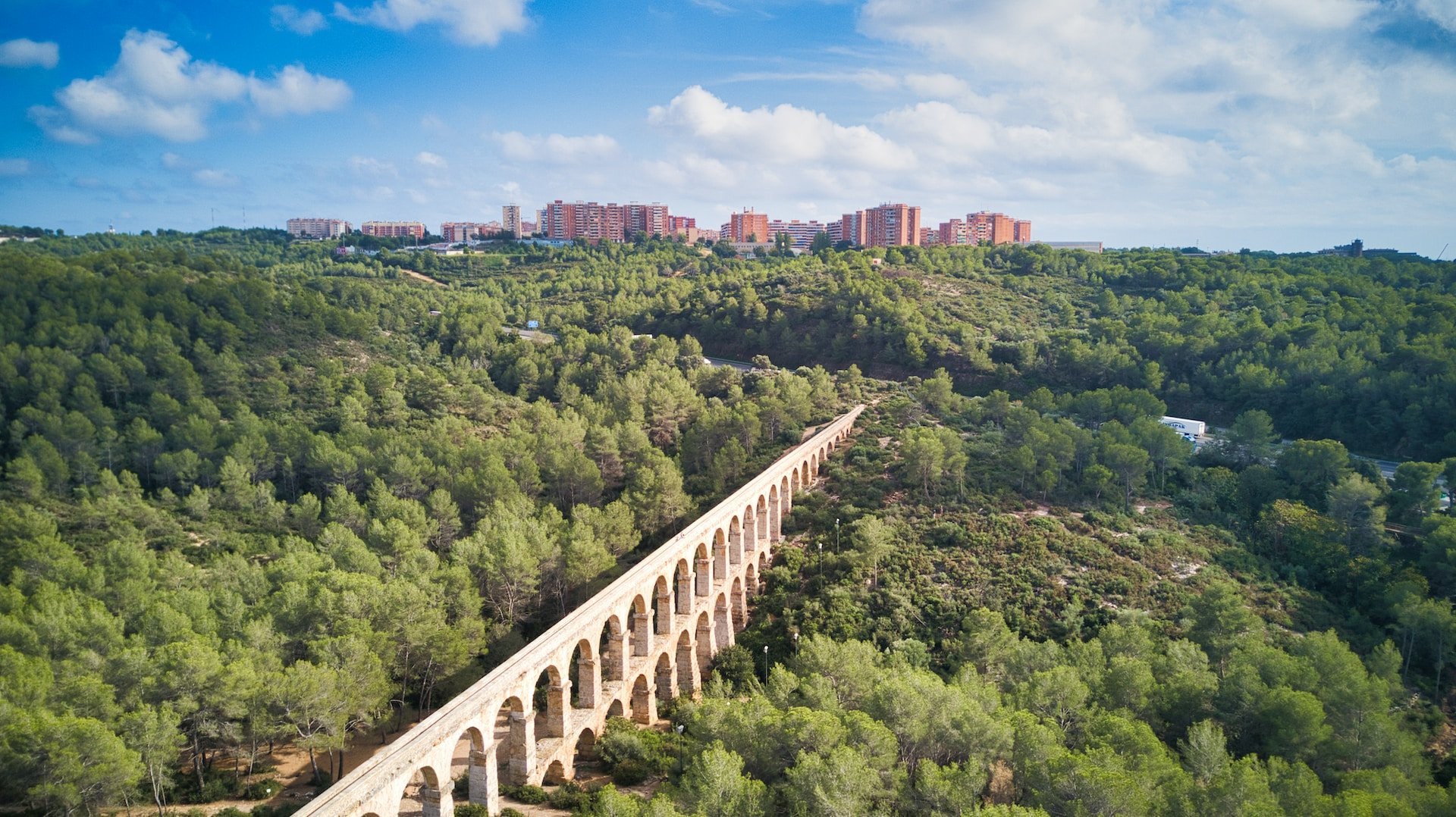
Costa Brava is lined with beaches, and reachable by bus or train. Sitges has some nice seaside parties. Tossa de Mar is a bay with a castle for a backdrop.
You can also make a trip to Figueres to see the Dalí Museum. (This guy’s a pure legend. Even if you’re not into surrealist art, you should go.)
Backpacking Córdoba
Córdoba is a city that is not usually very high on people’s backpacking Spain itinerary. But those that do visit are well rewarded. It is one of the nicest places to stay in Spain and Córdoba’s hostels are such a vibe!
One building alone should give you enough reason to travel to Córdoba. The mesmerizing Mezquita Catedral is a church that became a mosque before reverting back to a church. This building fuses both Gothic and Islamic architecture – two religions and two cultures under one roof.
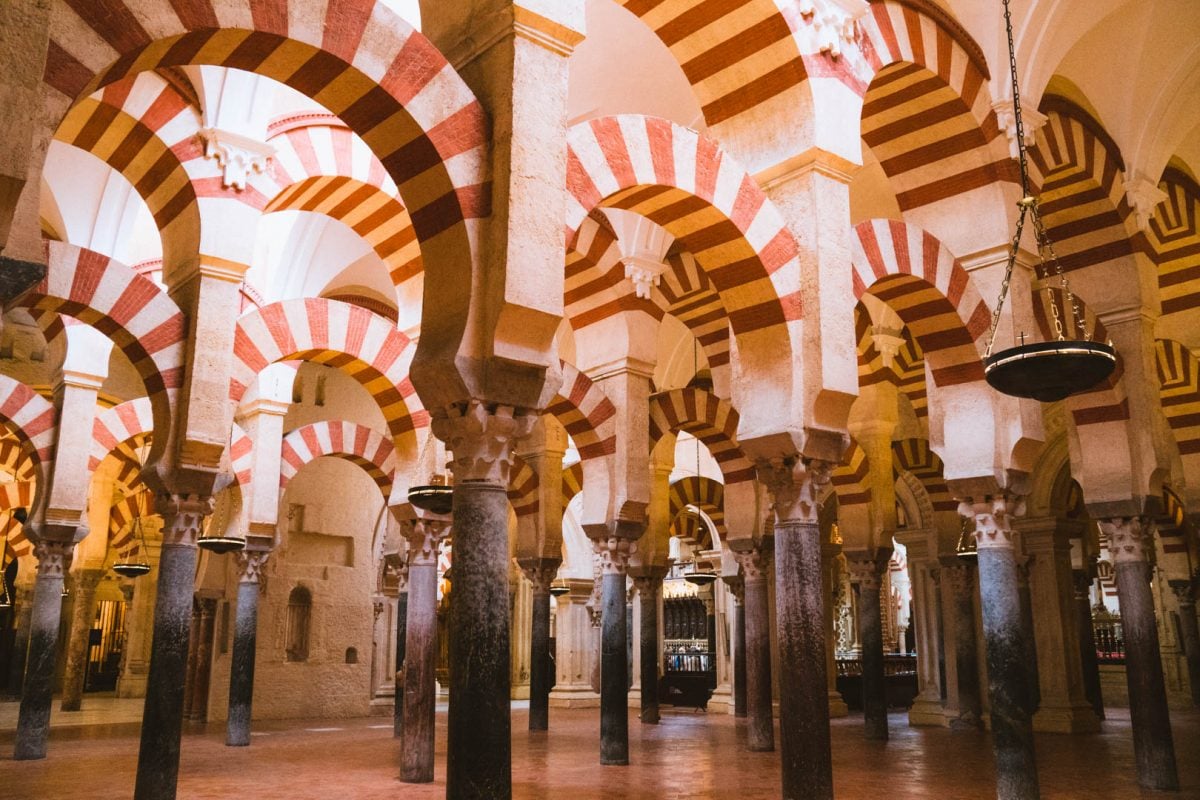
Photo: Ana Pereira
Aside from visiting the Mezquita, the city of Córdoba itself is beautiful (and photogenic) with plenty of shops, cafés, and winding foot streets. The neighbourhoods in Córdoba are really chill to stay in and get to know the locals. They even have a yearly festival in May where contestants compete for the prettiest courtyards.
Summers are scorching hot and crowded though. I much prefer planning a trip to Córdoba in spring or autumn.
Backpacking Seville
Seville encapsulates the essence of Southern Spain: narrow alleyways lined with small bars, large, open plazas and dramatic churches and palaces, and scorching hot summers… There are so many cafés and tapas bars to stop in.
Did I say that already? Oh, well, yeah: we’re in Spain.
I love the local vibe that staying in Seville gives you. Stroll around the Barrio (neighbourhood) Santa Cruz, and for an authentic tapas experience, eat at the Feria Market in the Macarena neighbourhood. Walk along Las Seta De Seville for spectacular views.

The ordinary really seems extraordinary here. Most of the bars aren’t extraordinary, they’re always full of Spaniards enjoying life with a cafecito or cerveza. It’s a vibe.
Seville has tons to see during the day as well. In terms of sights, Seville has an impressive cathedral, but nothing compares to Seville’s Alcázar, which was built in the 1300s.
(Have you seen this before? Maybe. Game of Thrones shot the Dorne palace scenes here.)
Seville is the place to watch an authentic flamenco performance, and you can’t go backpacking in Spain without seeing a flamenco show. La Carbonería is a local favourite and a popular spot to watch an authentic flamenco show.
Backpacking Málaga
Like most of the cities in the South of Spain, and especially along Costa Del Sol, staying in Málaga involves eating, drinking, and hanging out. These are all great things to do all day, every day. The plaza central (central plaza) is one of my favourite spots.
You have to spend some time in the old town of Málaga. I also love the fact that Málaga is right on the beach. So after a lovely day of exploring historic cathedrals and Roman ruins, you can go and drink some cold ones on the coast.

Buy food and shop around Mercado Merced for nice prices and nice quality. There are a few nice museums in Málaga, like the Picasso Museum, but overall, my favourite and most memorable part about Málaga was simply hanging out at the beach, cafés, and restaurants in the plaza.
If you’re planning to visit Spain as a solo traveller, check out the hostels in Málaga. They are so cool and a great place to meet people.
The majestic mountaintop town of Ronda is a great day trip from Málaga (or Seville). Here you’ll see the photogenic Puente Nuevo bridge with views of the Ronda Mountains above a deep gorge. This bridge separates the new town from the Moorish old town.
Backpacking Granada
To truly experience the charm of my favourite city in Southern Spain, you have to peel back its layers. Luckily, my sister studied in Granada and took me to all of her favourite spots.
You can’t stay in Granada without visiting Alhambra palace: one of the most impressive places to visit in all of Spain. By the time I arrived in Granada, I was sick of looking at churches but the Granada Catedral and Grand Chapel are something else! Every time I walked by the Granada Catedral there was new music echoing across the courtyard from new musicians.
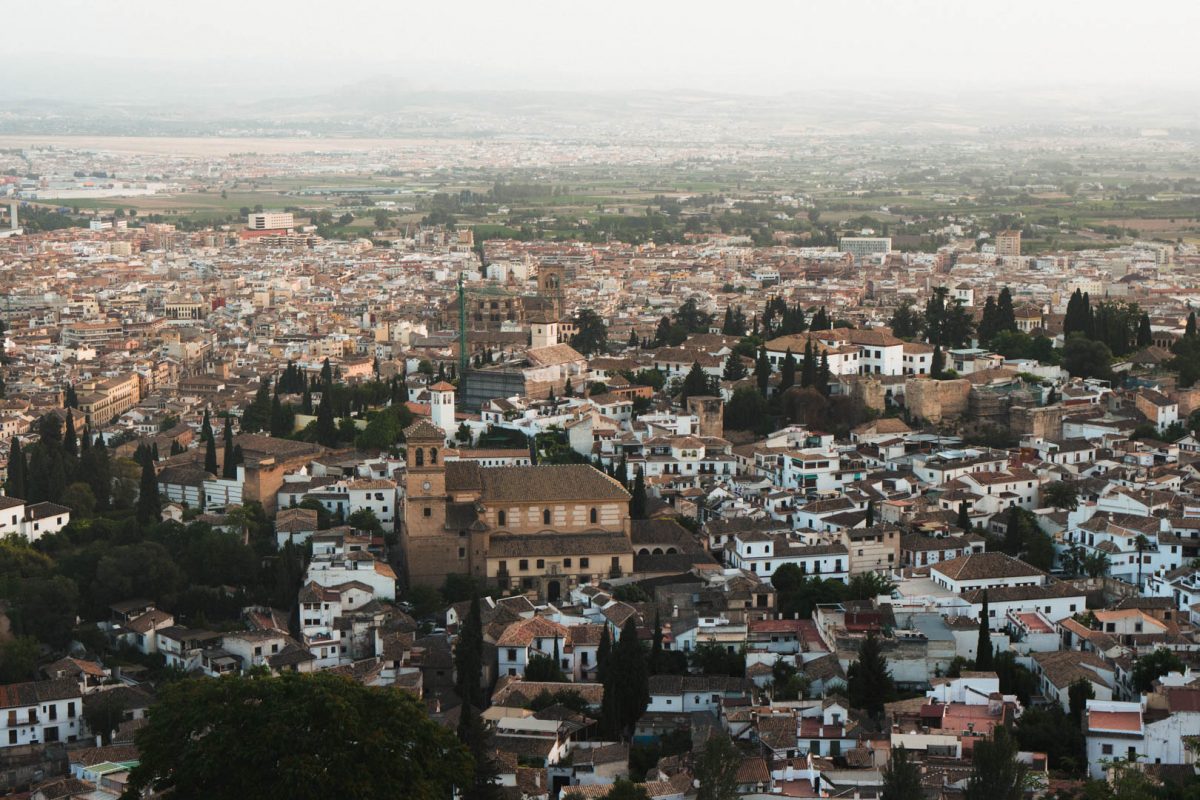
Photo: Ana Pereira
When you visit Granada, get lost among the ascending streets of el Barrio Albayzín, Granada’s prettiest neighbourhood. Barrio Sacromonte next door is great as well.
Granada is the only place left in Spain with free tapas. Free food with every drink you purchase! The more drinks you order, the bigger the dishes get.
Bar crawl in search of the best tapas and eat free dinner by drinking more beers. (Like a dream.)
Check out Calle Navas and Calle de Elvira for the best tapas bar hopping. Elvira and around the Bullring specifically have great cafés, bars, and tapas that touched my soul.
For great views of Granada, hike up to San Nicolás Mirador and Miguel. There are a lot of great parks sprinkled throughout the city as well.
If you are itching to spend some time outdoors and work off all of Andalucía’s tapas, the Sierra Nevada Mountains are right next door. Hiking is open for most of the year, although the height of summer is scorching. AND you can ski (quite affordably) during winter!

Worldpackers connects travellers with hostels, schools, NGO’s and many more. Get free accommodation in exchange for volunteering a few hours a day. You won’t just save serious $$$, you’ll experience a different culture, cool projects, meet new people and integrate into the community in a different way.
Broke Backpacker readers get a $10 discount when you sign up. Use the discount code BROKEBACKPACKER. Plus, get 3 free months on your membership during their summer promo!
Travel well with WorldpackersBackpacking Valencia
I went to visit Valencia on a whim and ended up having one of the best weekends of my life. It’s famous for paella and beaches and I quickly found out it’s much more than that.
The locals, for me, were the best part of Valencia. Choosing a private room in an Airbnb in Valencia is a great way to get to know them. Warm and inviting, we had the best parties and best paella with these cool ass people.
Grab desayuno (breakfast) at Plaza de la Virgen. Visit the Ancient Valencia Central Market for fresh fruit and produce; it’s a great way to immerse with the locals. Rent a bike and cruise around on the promenade by the beach.
Go ahead and try their local drink, Agua de Valencia (Valencia water). It’s anything but water: orange juice, cava, gin, and vodka… The best place to enjoy Valencia water is Café Madrid de Valencia, where the drink was invented!
I (completely coincidentally) ended up in the city for the Las Falles Festival. It was one of the most happy accidents of my travelling experiences.
If you are backpacking Spain in March, this is one of the festivals in Spain worth planning for. This is a week-long party with streets lined with people in beautiful traditional dresses and fireworks designed to be so loud and stimulating to give you an overwhelming sense of being here and present.
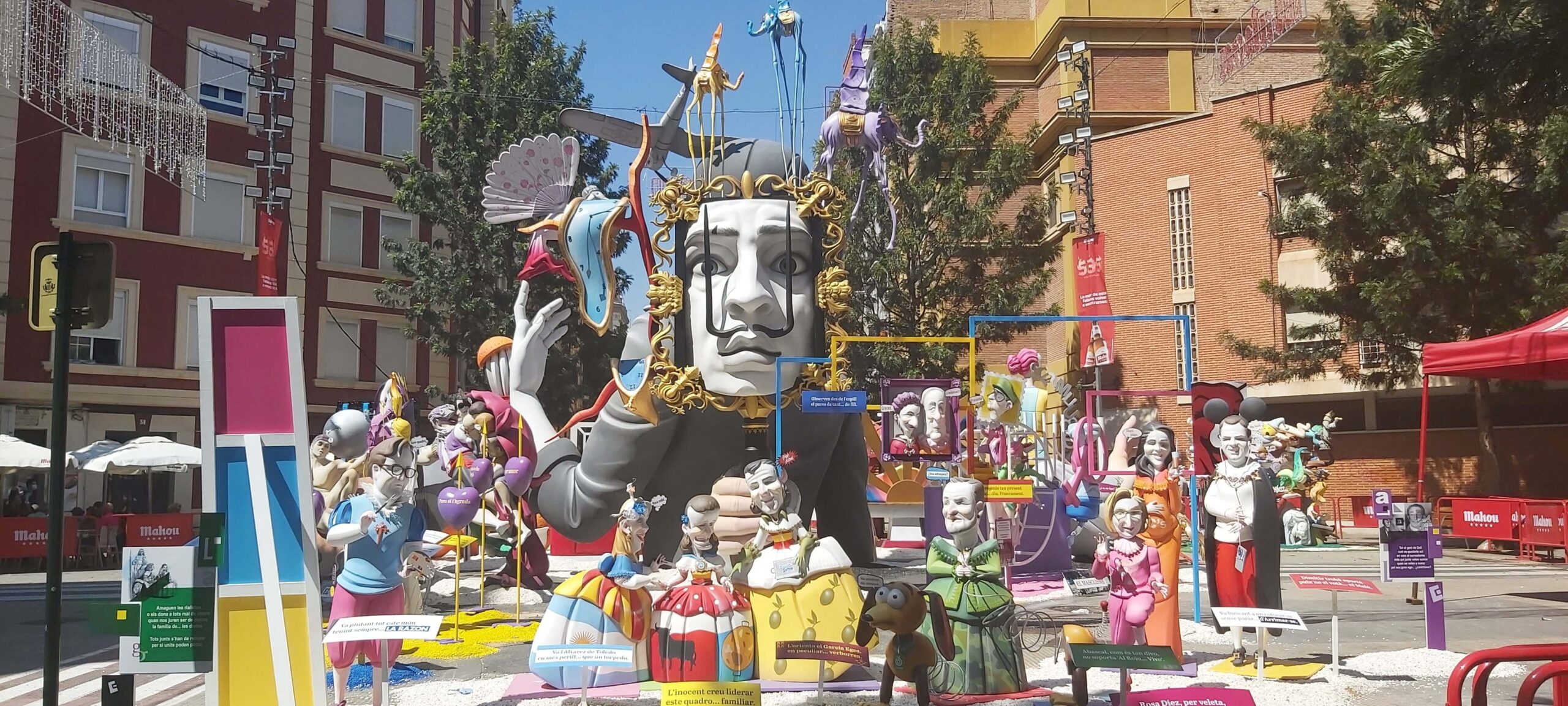
Photo: @Lauramcblonde
The central focus of the festival is each neighbourhood in Valencia spends a year creating a falla. These are insane works of art, incredibly beautiful, and some as big as buildings made completely out of paper mache. Then – here’s the kicker – at the end of the weekend, they set fire to all of them.
It’s one of the most breathtaking events you can see in Spain. The locals are really proud of it (rightly so) and really welcoming to visitors to get involved in the celebrations.
Backpacking San Sebastián
San Sebastián is a surfer town with a gorgeous crescent-shaped beach and lively nightlife. This is also a food lover paradise thanks to Basque ‘Pinxos’ the local speciality similar to tapas in the South.
Spend some time getting to know the different areas of San Sebastián. The locals here are really cool and you will be welcomed by making a little effort to get to know them.
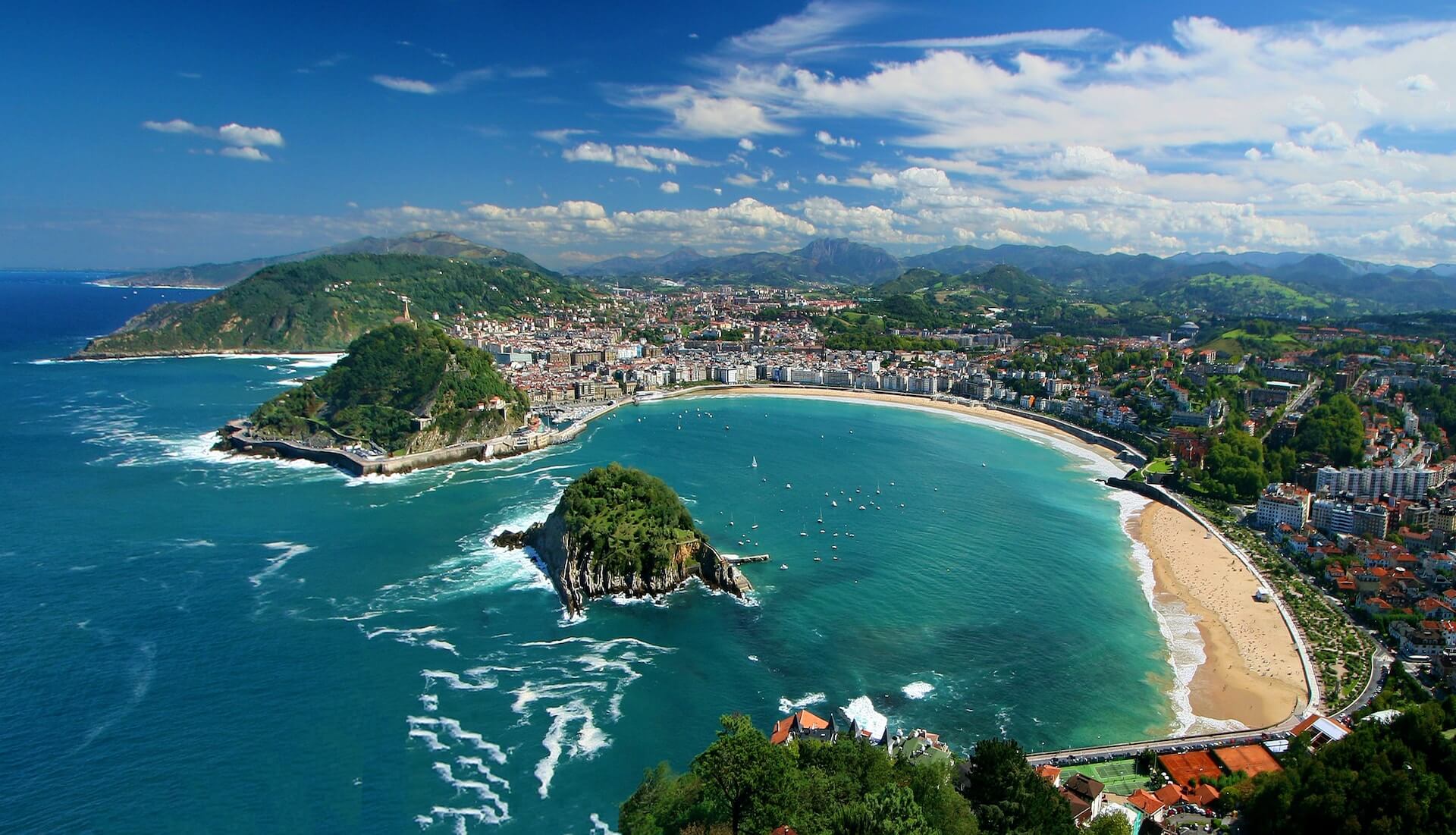
Go shopping (or window shopping) in Gros, a barrio lined with trees and stores stocked with creative local goods. La Playa de la Concha beach is great for sunbathing. Bar Zeruko and Bar Azkena are two of the top-rated pintxos bars in San Sebastián.
There are also a ton of cool hostels in San Sebastian here too. I met some cool travellers who were the best buddies to chill and appreciate with! Go bar hopping, take a stroll on the promenade along Zurriola Beach, or ride some waves on these sick surf beaches.
Backpacking Galicia
The region of Galicia is located on the far western end of the coastline of northern Spain. Mystical Celtic religion and a rugged coastline reveal its connections with the likes of Scotland, Wales, and Ireland.
Although all the locals speak Castillano (which we know as Spanish), their primary language is their regional Galician (Gallego). Many of them don’t even claim to be Spanish at all.
Though its reputation for being cold and wet is prominent across Spain, don’t let that deter you. I’m from the UK, so I can confirm, a little rain never hurt anyone. The best place to stay in Galicia – if you are interested in seeing the northern coast – is A Coruña.
You should also definitely stay in Santiago de Compostela, one of Spain’s major cities and most famous tourist attractions. It’s home to the Catedral de Santiago, the end-point of one of the most popular pilgrimages in the world, Camino de Santiago.
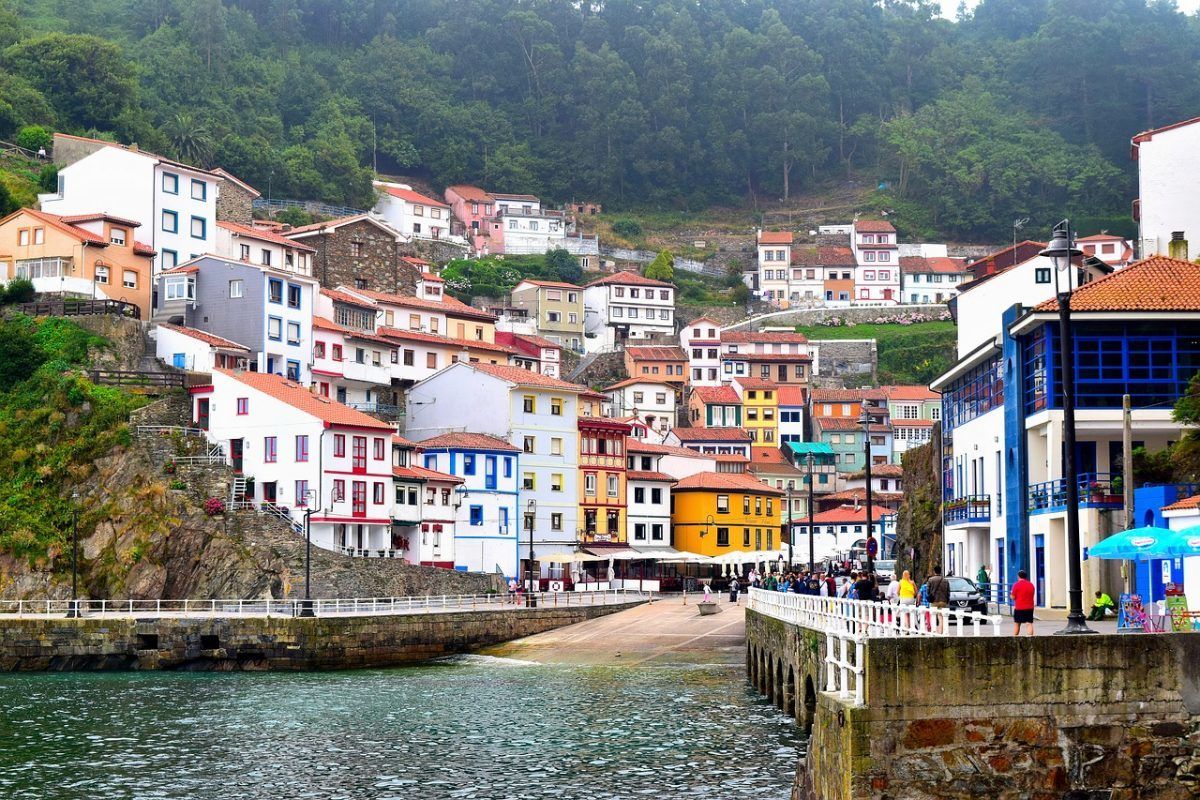
Along with admiring the architecture and art, be sure to walk around Rua del Franco (Franco Street) right off the main square. It’s bursting with seafood restaurants and bars that make you want to get your happy mode in full swing.
Backpacking Spain’s Islands
Spain’s beautiful islands are completely diverse, and full of natural wonder and sun-hungry Germans on holiday packages. Their reputation as a tourist trap is justified. Though don’t let that deter you.
Outside of the popular destinations, these pockets of goodness offer impressive landscapes, laid-back living, and pretty cheap travel. It’s a great idea to stretch your backpacking Spain budget.
Spain has two sets of islands: the Balearic Islands and the Canary Islands. I stayed in the Canary Islands for most of the pandemic. I felt damn lucky too; year-round nice weather, lower cost of living (tax-free alcohol!), and very laid-back atmospheres made lockdowns a breeze.
The Canary Islands are set off the northwestern coast of Africa. These little volcanic islands are drastically different from one another.
From dry deserts in Lanzarote to humid forests in La Gomera, active volcanoes in La Palma, and even snow in the winter in Tenerife, the Canary Islands are seriously impressive. If you stay in Tenerife, make the trip to El Teide to see Jurassic views.
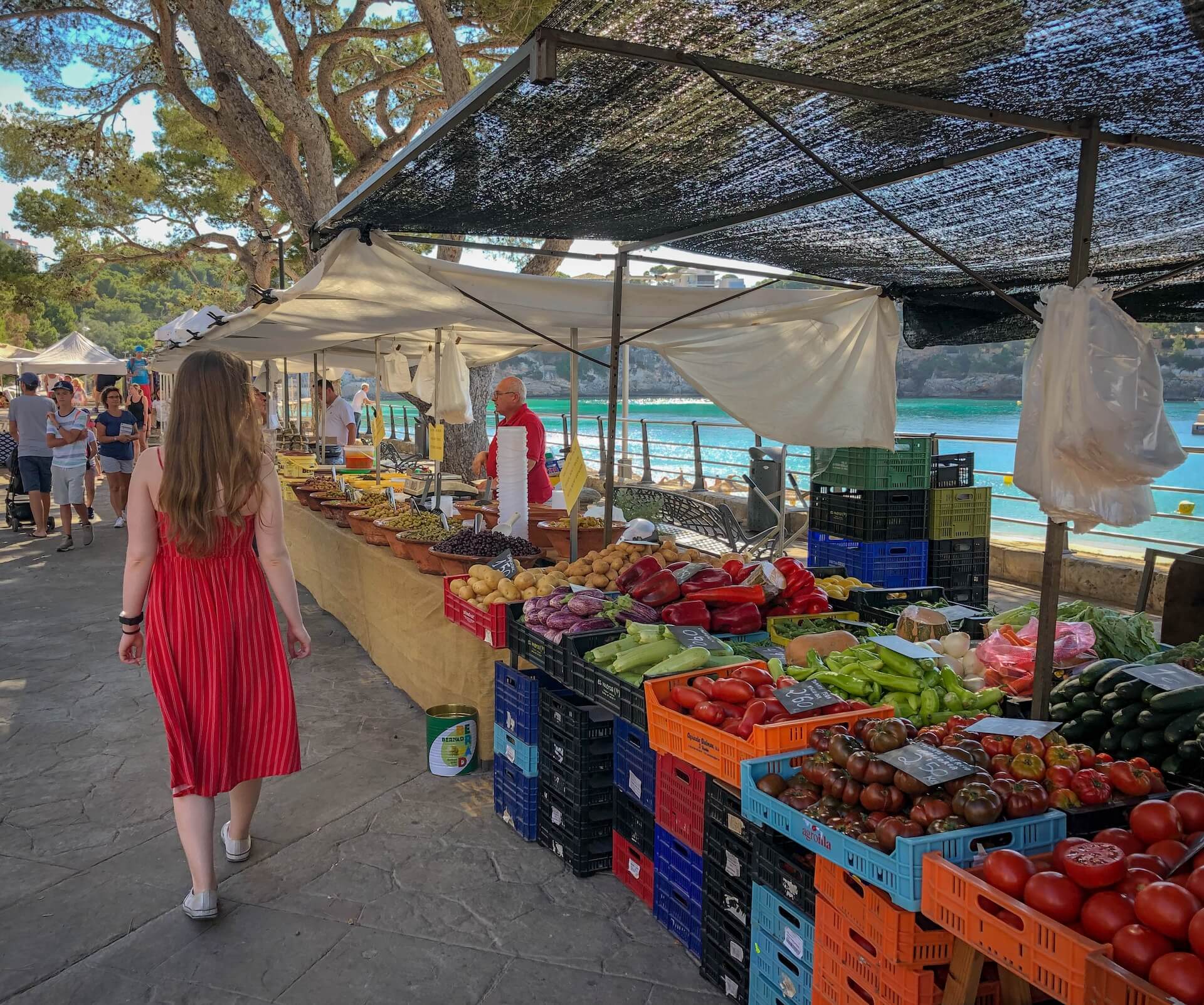
The Balearic Islands have infamous clubbing towns such as Magaluf and Palma Nova. Many people go when they are 16 to get pissed and try and lose their virginity. Then there’s the wild coke-heavy, techno summer parties of Ibiza.
But there are plenty of laid-back areas too, with striking views and adventure sports to get tucked into, hidden sandy beaches and some of the best yoga retreats in Spain. Menora and Formentera are the best alternatives in the Balearic Islands for white powdery beaches and turquoise blue waters
You can take the local ferry or fly between Spain’s islands. Budget airlines offer cheap flights.
Though, transport infrastructure isn’t great. Public transportation is inefficient and taxis are expensive. If you want to explore the islands properly it really helps to rent a car.
Getting Off the Beaten Path in Spain
Spain is one of the most popular countries to visit in Europe, and if you’re backpacking Spain in summer, it’ll be hard to get away from the crowds. That being said, you can visit some of Spain’s lesser-known regions, full of culture and beauty, like Galicia, Cantabria, and Asturias.
These regions offer sandy coves and beaches, sparkly green coastlines, and a stark, rugged contrast to the rest of Spain. They are best to visit in summer due to unpredictable rain and weather off-season.
Picos de Europa has some of Spain’s best hiking and most dramatic scenery, as well as arguably the best food. I’m talking full food coma from seafood and cheese.

Many people visit the popular and beautiful town of Salamanca, but backpackers love other charming villages in Castilla and León. This Northwest region is rich in history and cathedrals. Aragón, just west of Catalonia, offers plenty of quaint villages amongst the Pyrenees Mountains.
If you are into Roman history, and especially if you’re backpacking Spain and Portugal, check out Emerita August. It’s got Spain’s best Roman site and some of Spain’s finest cured ham.
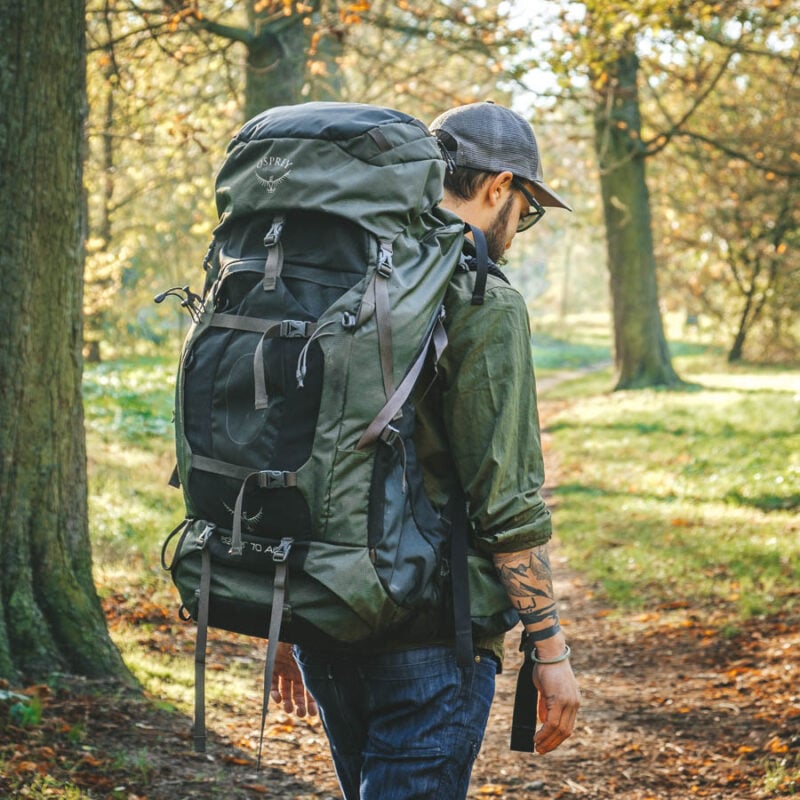
We’ve tested countless backpacks over the years, but there’s one that still stands the test of time: the backpacker-approved Osprey Aether.
Want more deetz on why it’s so damn perfect? Then read our comprehensive review for the inside scoop!
View on Osprey View on REI9 Top Things to Do in Spain
On your way, you’re going to be greeted by many great places to visit in Spain. Below I have listed 8 things, uniquely Spanish, that you have to do when backpacking Spain.
1. Go to a fútbol game
Spain is home to two of the most famous teams (and rivals) in the world: Réal Madrid and FC Barcelona. Even if you just manage to score cheap(ish) nosebleeds, the energy in these massive stadiums is a truly unique experience while backpacking Spain. I went to a game at Camp Nou to watch FC Barcelona and had a blast.
If you can bag tickets to El Clásico (a derby), be prepared for a crazy night out. Watching the game from a bar is still a vibe.
Budget Tip: Real Madrid is the famous one, but half of the locals support Madrid’s other team, Atlético Madrid. Watching Atlético is just as good a cultural football experience – for half the cost!
2. Hike El Camino de Santiago
I don’t like to plug things that is full of tourists however, this is an exception. El Camino de Santiago has history rooted in Mediaeval times and it’s really worth taking the trek yourself.
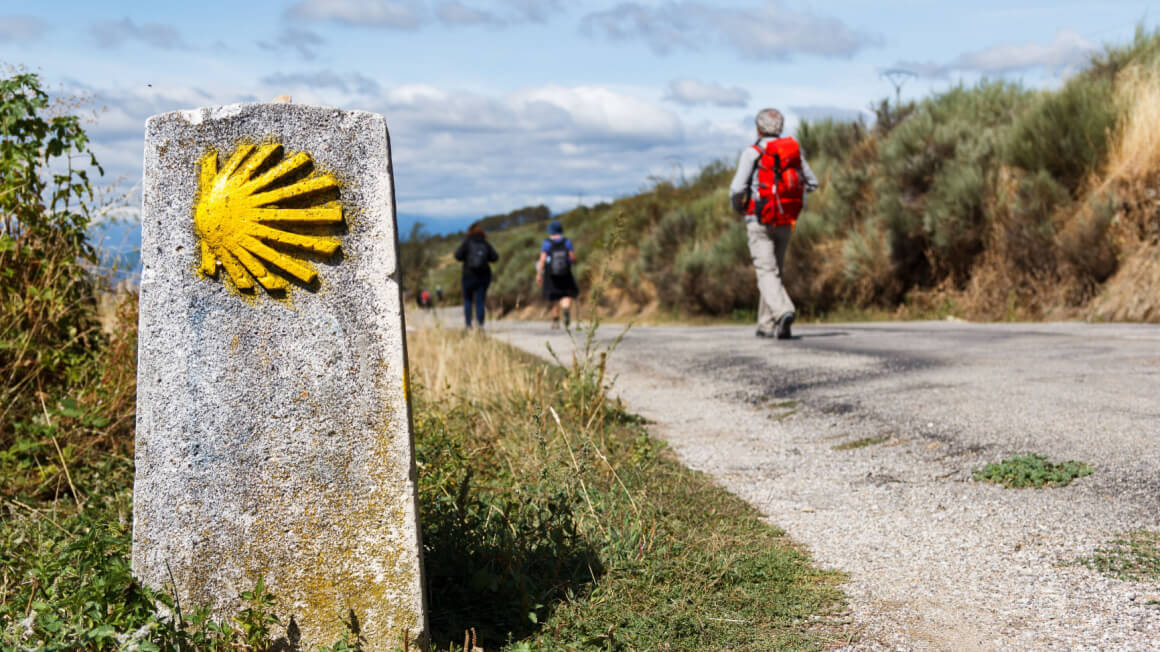
Follow in the footsteps of hundreds of thousands of pilgrims on this epic 500+ mile hike through charming villages and finishing in the cathedral in Santiago de Compostela. El Camino has many different starting points. The Pyrenees bordering France is the most popular one, but many people start this trek in Portugal.
This is not only a visually beautiful thing to experience, but the amount of people you get to meet is second to none. It’s a really special experience walking with so many people in the same direction, for the same goal. It opens up your heart.
3. Do some hooking up
Yes, you read that right. You know those stories you hear of people going to Spain, falling in love with the waiter, and never wanting to leave? Yep.
That’s because this is a damn sexy place. It’s a no-regrets policy in Spain. Go and create some lovely, sexy memories.
4. Keep ordering drinks and eating Tapas
Yeah, you’re going to visit Spain. Surely you’re going to be eating tapas at some point.
But this is your free pass to go and eat your body weight. Say yes to all the olives, all the cheese, all the bread.
If you want a real tapas experience, visit Andalucía in the south of Spain. This is the real shit, not just tapas for tourists.
You can still get free tapas in Granada, Spain every time you order a drink. The tapas tend to get bigger with every round you order too.
5. Admire Gaudi’s beautiful architecture while visiting Barcelona

Photo: @Sebagvivas
This genius is all over Barcelona to this day. Gaudi’s art and architecture spread right across the city and you’d really be missing out if you didn’t at least go out of your way to see a few of them.
Obviously, everyone knows La Sagrada Familia. I’ve seen a lot of churches in my time and this is easily the most beautiful. You’ve probably heard of Parc Güell too (or seen desperate photos on Instagram) but it is worth visiting.
Budget tip: If you’re on a really tight backpacking Spain budget, Sunday Mass gets you inside La Sagrada Familia for free. Get there early – no dilly-dallying – or you won’t get in. You’re not allowed to take pictures and you definitely won’t see the whole building but it’s a good way to cast your eyes inside in case you really can’t squeeze the tour into your budget.
6. Island hopping
Spain has two chains of islands in the Mediterranean Sea: the Balearic and Canary Islands. They are super varied, and (some) are pretty budget-friendly. Either way, they are designed for visitors to have an absolute blast.
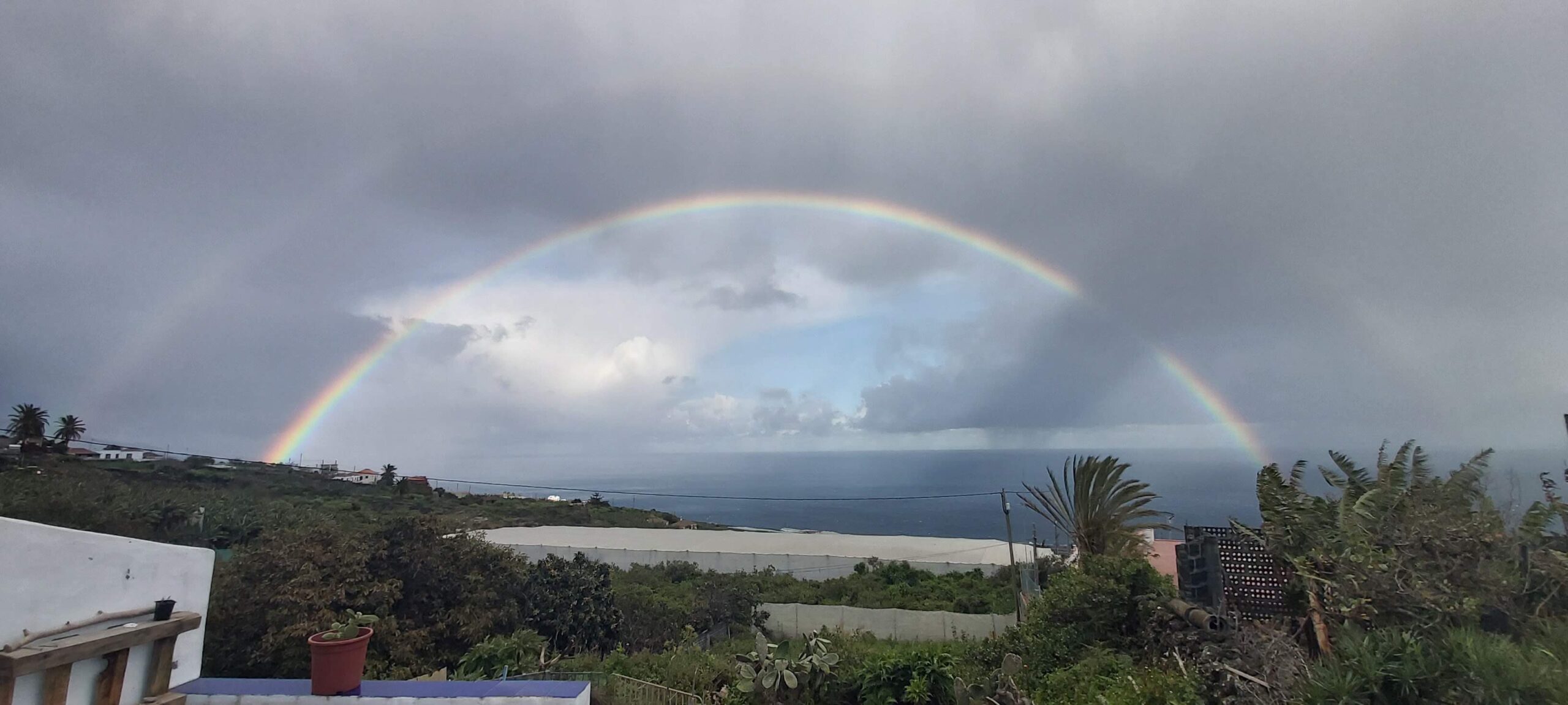
Photo: @Lauramcblonde
As well as Ibiza’s monster clubs and 24-hour parties, Gran Canaria has great outdoor activities, and Mallorca is simply paradise. However, staying on Fuerteventura, one of the lesser-known islands, is straight-up chill.
7. Marvel at the Alhambra
This palace in Granada is perhaps the coolest Islamic building in the world! You can spend an entire day marvelling at the fortress and gardens. The view of Granada from the palace isn’t half bad either.
8. Go to a Flamenco Show
Flamenco is traditionally found in the South of Spain, most famously in Seville or Cádiz. Though they are scattered throughout the country too. Flamenco shows are passionate and full of culture.
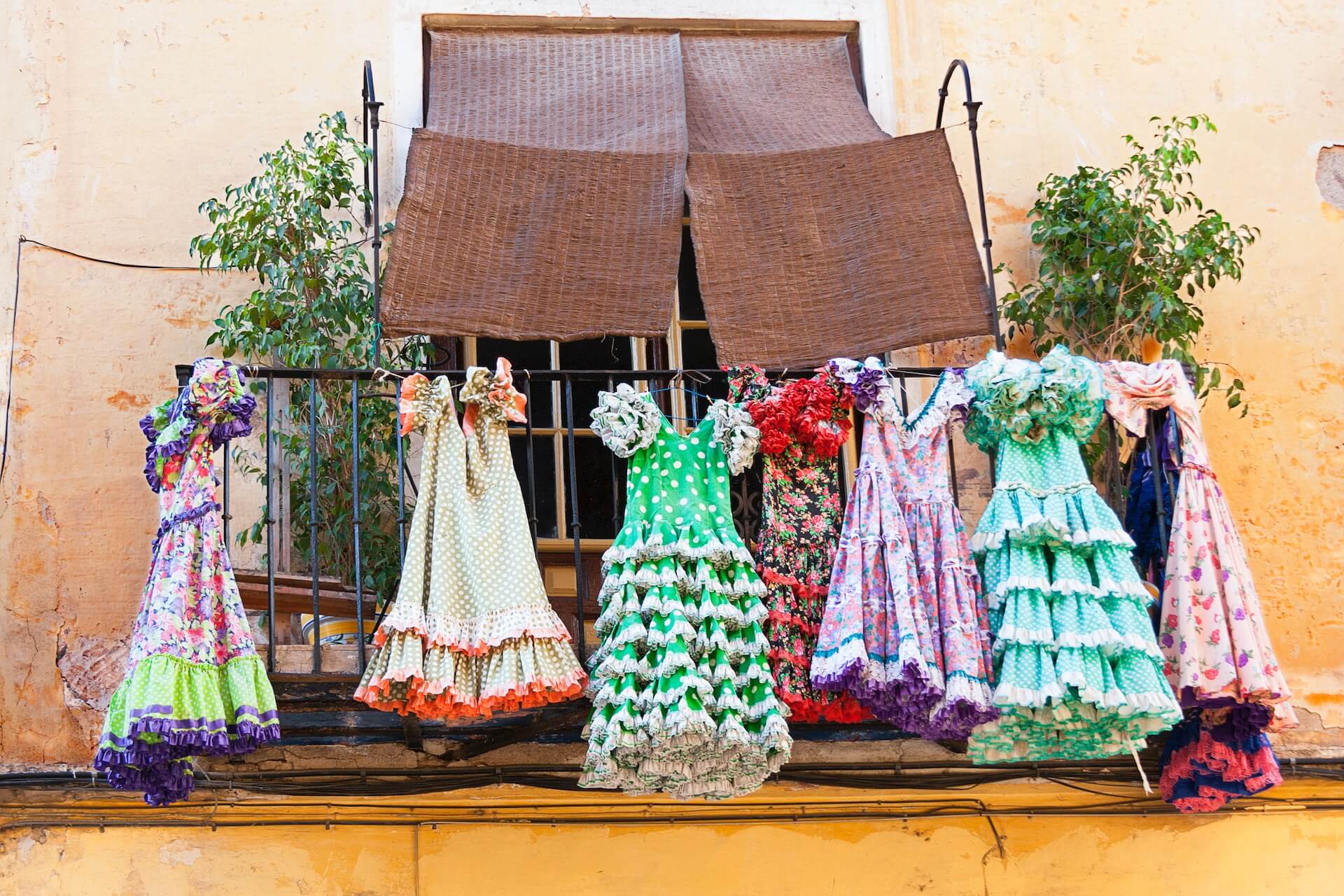
While visiting Spain, you can peek into the souls of the Spanish a little bit through their flamenco dancing and music. Watch them pour their hearts out to you.
9. Party until the sun comes up
When it comes to parties in Spain, you aren’t limited with choices. Barcelona or Madrid? Ibiza or Mallorca?
There’s no bad choice. You can find a party anywhere in Spain. From wall-to-wall bars to megaclubs, there is something for everyone… pretty much anywhere.

My missus travels with all her clothes in ziplock bags: don’t be like my missus. UP YOUR PACKING GAME!
Packing cubes for the globetrotters and compression sacks for the real adventurers – these babies are a traveller’s best kept secret. They organise yo’ packing and minimise its volume too so you can pack MORE.
Or, y’know… you can stick to ziplock bags.
View Our Fave Cubes Or Check Out the Sacks!There are plenty of amazing hostels in Spain. The cities, towns, and villages are all no strangers to visitors. They know – as well as anyone – how to offer a homey and fun place to rest your head and meet cool people.
If you want to see the best hostel options in Spain, I suggest using HOSTELWORLD. You can even filter your personal travel needs and read reviews to find the perfect place for you.
If you’re walking the Camino de Santiago, make sure you book ahead in the summertime. This popular route books up fast.
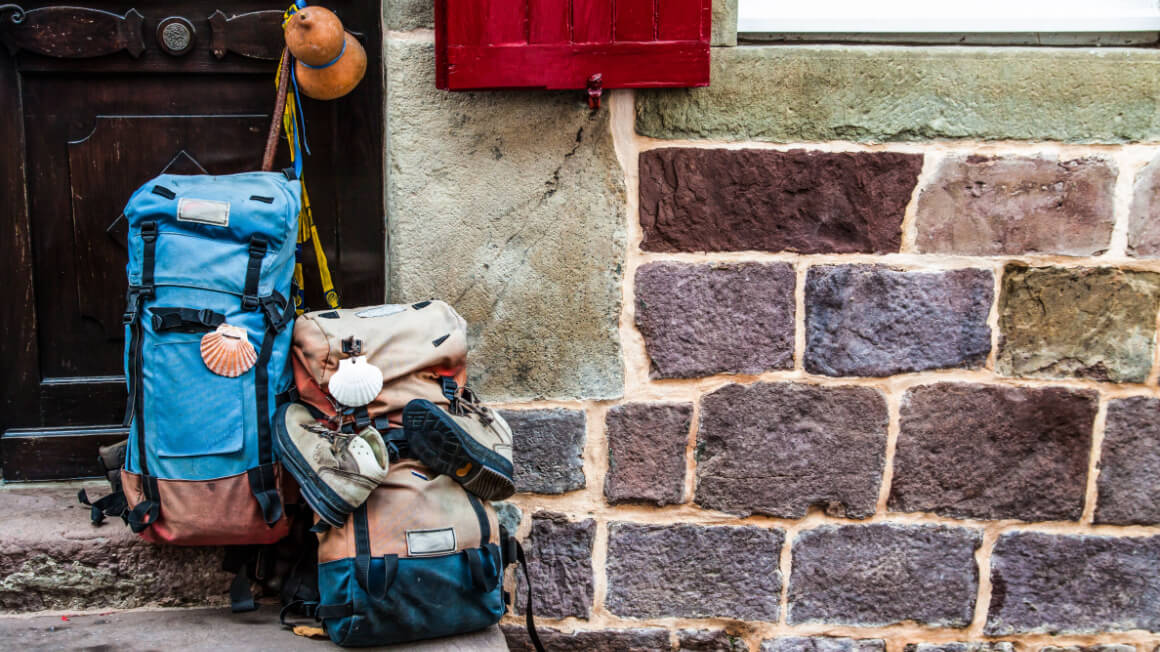
Accommodation prices increase dramatically from June to August pretty much across the whole country, so plan ahead to get the best deals. During the summer, Couchsurfing is the best way to save money and meet locals, though it’s competitive.
It’s always a good idea to ask a mate if they have a mate (of a mate?) if they have a place you can crash for a few nights. You’ll be surprised how often travellers want to help out other travellers. This could easily save you a few hundred dollars in peak season.
However, one of my favourite places to stay are the Airbnbs in Spain. I love the variety and having my own place to come back to after wearing myself out in the city centre or draining my energy after doing nothing at the beach all day. Especially if you’re in a group, a private room on Airbnb can be as affordable as a hostel.
Best Places to Stay in Spain
When you visit Spain, you’re going to need to stay somewhere. So here are some of the absolute best places to stay in Spain.
Especially compared to other western European countries, Spain is pretty budget-friendly. Spain will help stretch your European travel budget a little further.
That being said, Spain is a notable tourist destination full of famous tourist attractions. During the festivals and the summer months, prices soar.
Towns that seem semi-abandoned in the winter become flooded by families and newbie backpackers when the sun comes out. So bear this in mind when you’re deciding when you want to visit Spain. Out of season, you can bag yourself some serious bargains with cheap flights and budget hotels for less than $25 a pop (or less) if you keep your eyes peeled.
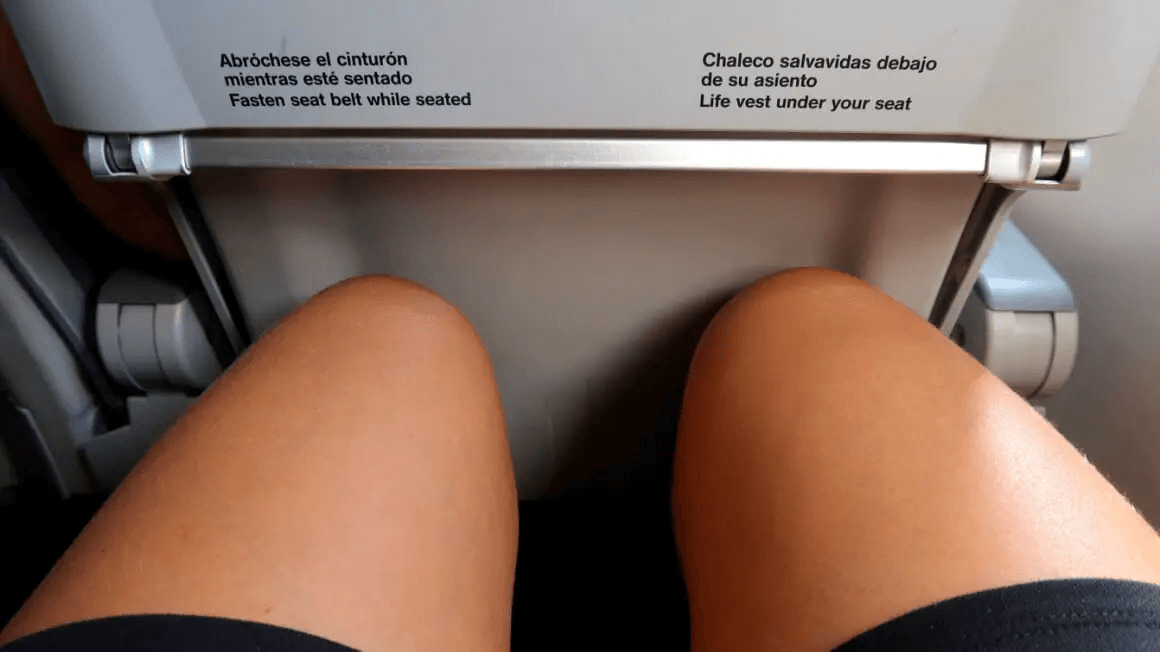
You can easily backpack Spain for less than 60 EUR a day, but if you want to spend half that, I suggest cooking your own food. Beer and wine are pretty cheap – you could get a pretty average bottle of wine for less than $5. So yeah, I don’t drink out too often.
Barcelona is the most expensive city in Spain, followed closely by Madrid. Accommodation prices are no joke, but you can bag yourself a reasonably priced drink and food. If you like your luxury villas, you’re going to pay for them here.
The other tourist towns aren’t that expensive if you stay away from the areas near the main attractions. University towns, like Cádiz, Granada, Seville, etc. are affordable for students (and, therefore, me too).
A Daily Budget in Spain
Your backpacking Spain budget doesn’t need to be anything crazy. The cost of living in Spain is pretty low compared to other countries in Western Europe. Here’s a little round-up of what to expect.
| Expense | Broke Backpacker | Frugal Traveler | Creature of Comfort |
|---|---|---|---|
| Accommodation | $5-15 | $15-25 | $40+ |
| Food | $8 | $10-15 | $30+ |
| Transport | $3-7 | $10 | $12+ |
| Nightlife | $8 | $15-20 | $30+ |
| Activities | $5 | $10 | $20+ |
| Totals per day | $29-43 | $60 | $132+ |
Money in Spain
Spain’s currency is the Euro. The current exchange rate is €1 Euro = $1.09 USD (March 2023).
ATMs are widely available everywhere in Spain, but you can expect a withdrawal fee for international bank cards, which is why I travel with a debit card that refunds me for transaction fees.
Visa and Mastercard are widely accepted in Spain. Always have cash on you when backpacking Spain and visiting smaller, family-run places!
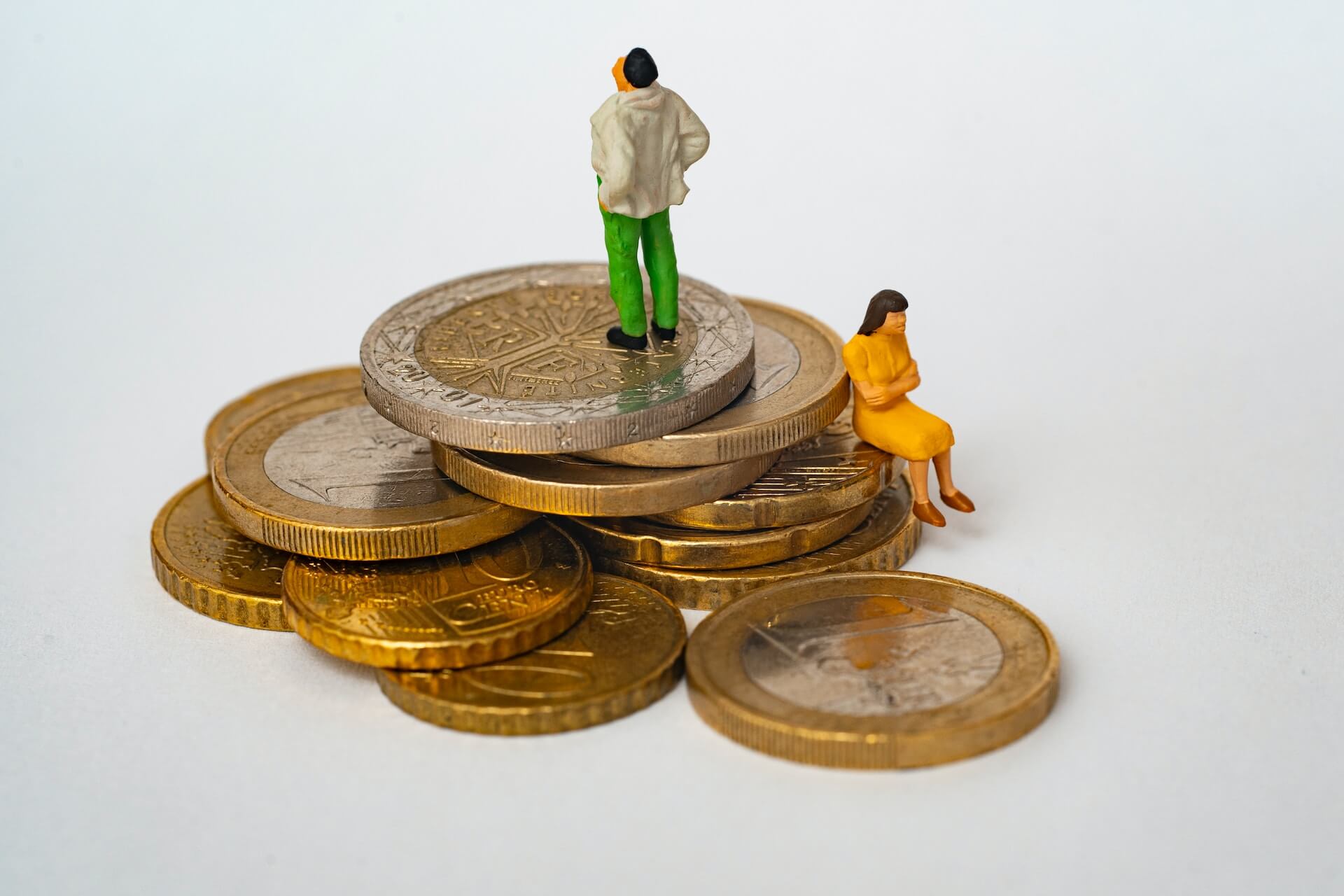
For all matters of finance and accounting on the road, The Broke Backpacker strongly recommends Wise – The Artist Formerly Known as Transferwise. Our favourite online platform for holding funds, transferring money, and even paying for goods, Wise is a 100% FREE platform with considerably lower fees than Paypal or traditional banks.
But the real question is… is it better than Western Union? Yes, it most certainly is.
Travel Tips – Spain on a Budget
If you are backpacking Spain on a budget, here are my top travel tips:

- Visit off-season: Aside from festivals like Las Fallas and Semana Santa, backpacking Spain during spring and autumn are the best times for lower prices.
- Camp: While wild camping is illegal in Spain, you can still find remote places to camp for free. You can also camp in Spain’s national parks! Bring your trusty backpacking tents and save some serious cash.
- Cook your own food: Many accommodations come with a kitchen and you’ll stretch your Spain backpacking budget a lot by making use of it! I love having a portable backpacking stove too.
- Eat free tapas: Sometimes eating out can save you even more money. This is mainly in Granada, where tapas comes free with your drinks.
- Book transportation early: Both plane and train tickets are much cheaper if you purchase them in advance.
- Take the bus: They’re cheaper than trains.
- Use Bla-Bla Car: This ridesharing app is even more affordable than the bus, and it’s easy to book a seat last minute.
- Couchsurf: The Spanish are awesome, and I am so grateful to explore its cities with local friends. Check out Couchsurfing to make some real friendships and see this country from their perspective.
- Pick and choose your popular destinations: If you tried to see all the famous tourist attractions in Spain, you would literally spend hundreds, if not thousands, on entry fees!
- Watch out for free days: Most museums and galleries have a free day, once or twice a month. Plan your trip around these windows.
- Pack a travel water bottle and save money every day!
Why Should You Travel to Spain with a Water Bottle?
Plastic washes up on even the most pristine beaches… So do your part and keep the Big Blue beautiful!
You aren’t going to save the world overnight, but you might as well be part of the solution and not the problem. I hope you become more inspired to continue being a responsible traveller. We’re on a mission to end single-use plastic.
Plus, now you won’t be buying overpriced bottles of water from the supermarkets either! Travel with a filtered water bottle instead and never waste a cent nor a turtle’s life again.
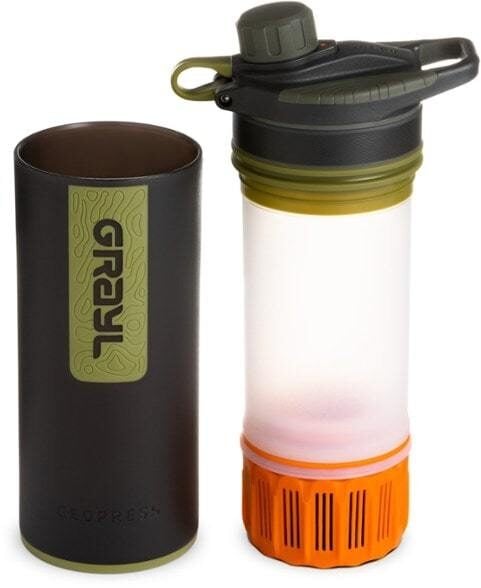
Drink water from ANYWHERE. The Grayl Geopress is the market’s leading filtered water bottle protecting your tum from all the waterborne nasties. PLUS, you save money and the environment!
Single-use plastic bottles are a MASSIVE threat to marine life. Be a part of the solution and travel with a filter water bottle.
We’ve tested the Geopress rigorously from the icy heights of Pakistan to the tropical jungles of Cuba, and the results are in: it WORKS. Buy a Geopress: it’s the last water bottle you’ll ever buy.
Buy a Geopress! Read the ReviewBest Time to Travel to Spain
The best time for backpacking Spain on a budget is shoulder season: March-May and September-November. Spain is more expensive during the summer and holiday season, and you have to book ahead and find creative ways to save cash.
Plus, aside from too many stinkin’ tourists, Central and Southern Spain are unbearably hot in the summer. That being said, if you are trying to travel to Spain during the height of the parties on the beaches, like Barcelona and Ibiza, then you’re going to want to visit Spain in June and July.
Many of the cities with thriving universities, like Granada, Seville, Cadíz, and Salamanca, have more parties during the school year as well. The best time to visit Madrid is spring and autumn. Prices are lower and the weather is more temperate.
Personally, I love the rain but Galicia and Asturias region are also best visited in the summer when the days are warmer and sunnier. I think the best time to visit Barcelona is in September or October. The heatwave has died off but it’s still beach weather.
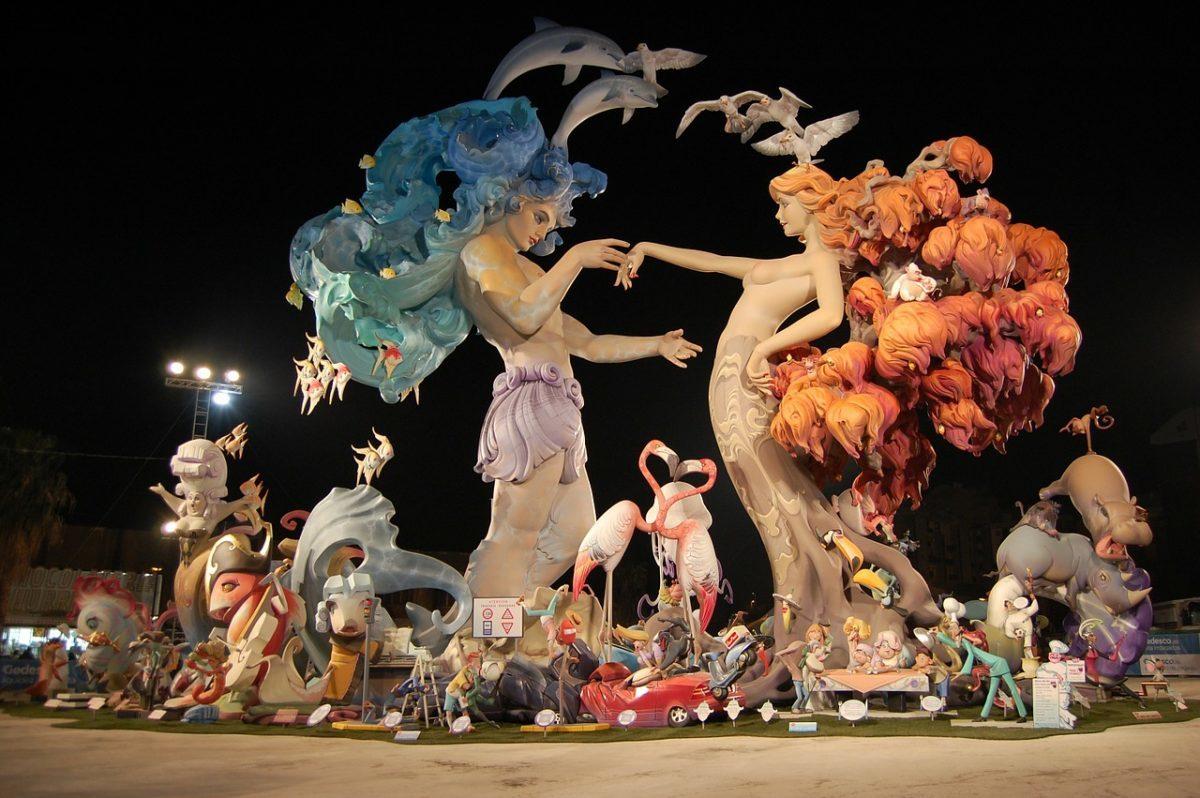
The parties are throwing their end-of-summer bashes, and September 11th is their “Independence” Day, where millions take to the street to celebrate. There are a ton of fun parties on this day, as well as political protests, so be cautious about riots.
Spain is one of the best countries to visit for festivals and cultural events. They are so fun and unique that it’s wise to plan your trip around a festival. There is something going on pretty much every month.
What to Pack for Spain
Packing for Spain isn’t particularly complex. But on every adventure, there are six things I never go travelling without:
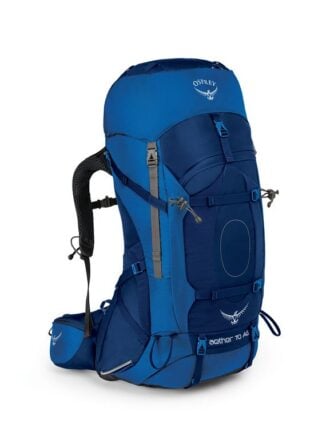
Osprey Aether 70L Backpack
Ya can’t go backpacking anywhere without a blasted backpack! Words cannot describe what a friend the Osprey Aether has been to The Broke Backpacker on the road. It’s had a long and illustrious career; Ospreys don’t go down easily.
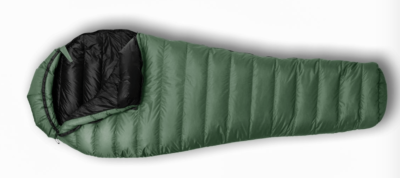
Feathered Friends Swift 20 YF
My philosophy is that with an EPIC sleeping bag, you can sleep anywhere. A tent is a nice bonus, but a real sleek sleeping bag means you can roll out anywhere in a and stay warm in a pinch. And the Feathered Friends Swift bag is about as premium as it gets.
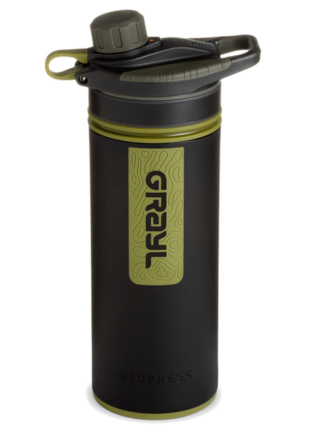
Grayl Geopress Filtered Bottle
Always travel with a water bottle! They save you money and reduce your plastic footprint on our planet. The Grayl Geopress acts as a purifier AND temperature regulator – so you can enjoy a cold red bull, or a hot coffee, no matter where you are.

Petzl Actik Core Headlamp
Every traveller should have a head torch! A decent head torch could save your life. When you’re camping, hiking, or even if the power just went out, a top-quality headlamp is a MUST. The Petzl Actik Core is an awesome piece of kit because it’s USB chargeable—batteries begone!
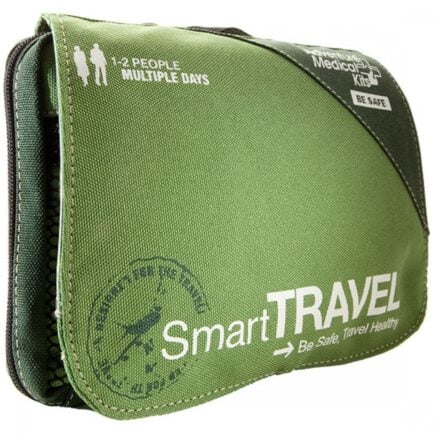
First Aid Kit
Never go off the beaten track (or even on it) without your first aid kit! Cuts, bruises, scrapes, third-degree sunburn: a first aid kit will be able to handle most of these minor situations.
Staying Safe in Spain
Spain is a very safe country to visit. But, always bear in mind, nowhere is 100% safe all the time. Always follow standard safety protocol, as you would anywhere else, and you’ll be fine.
What you really need to be careful of is pick-pocketing and petty theft. Madrid and Barcelona are notorious for these muther f*kers.
After countless warnings from locals, I still had my phone stolen out of my hand in Barcelona. I swear, it was gone so fast it was like a magic trick.
I’m not the only member of The Broke Backpacker team to have valuables stolen here either. I heard worse stories from locals about Spain’s safety in the big cities – so please take plenty of caution.
There’s a reason why people shamelessly wear their backpacks on the front here. You can never be too careful – especially in heavily touristed areas.
Be aware of your surroundings, and don’t carry a wallet in your back pocket (dur!). Watch out for strangers coming up to you with petitions and/or maps; this is usually just a distraction to steal your stuff, especially if you’re sitting at a café with your phone out, or walking around a touristy area.
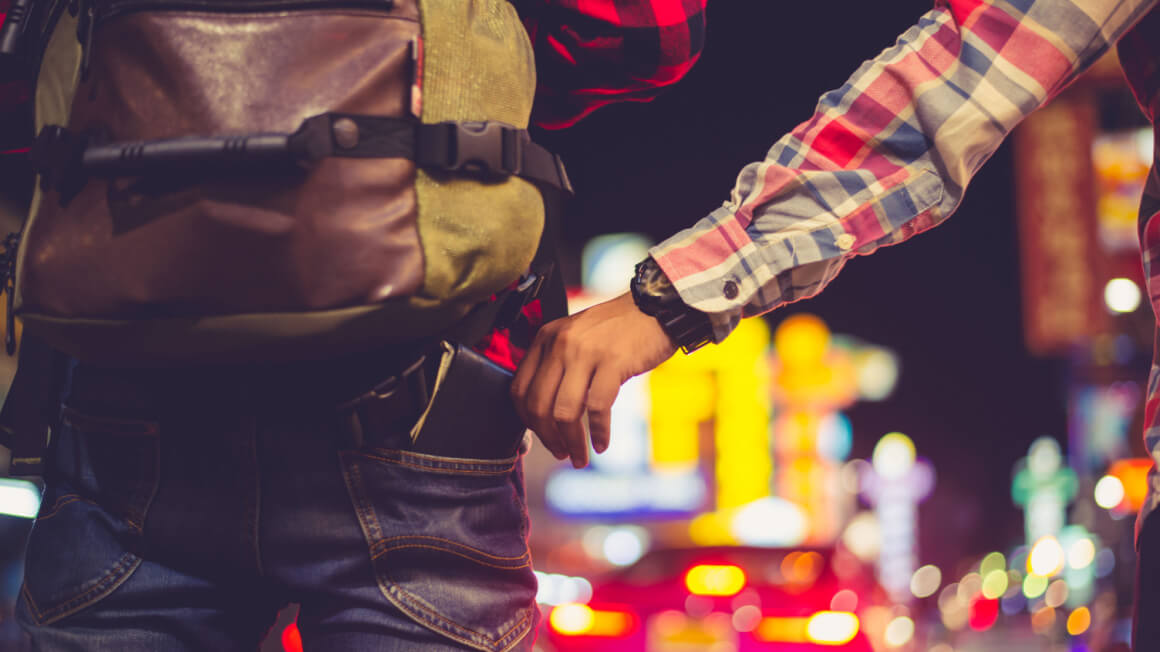
Use a backpack or purse that is hard to get into and bury your valuables within it. Thieves also use knives to cut bags open and take anything out they can grab quickly.
Other worse crimes are less common – but not impossible. If you are renting a car, don’t leave any valuables inside the car.
I don’t recommend walking around at night alone or in places you don’t know. Some places are okay but ask the locals first.
Sex, Drugs, and Rock ‘n’ Roll in Spain
All-night parties are a Spanish speciality. It’s easily one of the best party destinations in Europe with nightclubs, bars, and beach clubs stretching right across the country. Though there’s more going on in summer, there’s shit going down all year.
You won’t be disappointed by music festivals either. Two of my favourites are Primavera Sound and Benicàssim.
Funnily enough, with all the famous partying and socialising, travellers are dabbling in drugs in Spain. Have fun – though, be VERY mindful of your limits. That party week in Ibiza is a lot less fun with an overdose.
Weed is legal in Spain now. Getting into the dispensaries can be a little tricky though.
Many require you to be recommended by an existing member – though there are ways around it. Do a little digging in the local area you’re visiting in Spain. Be friendly, don’t make yourself look like a desperate tourist, and you’ll get a much better response.
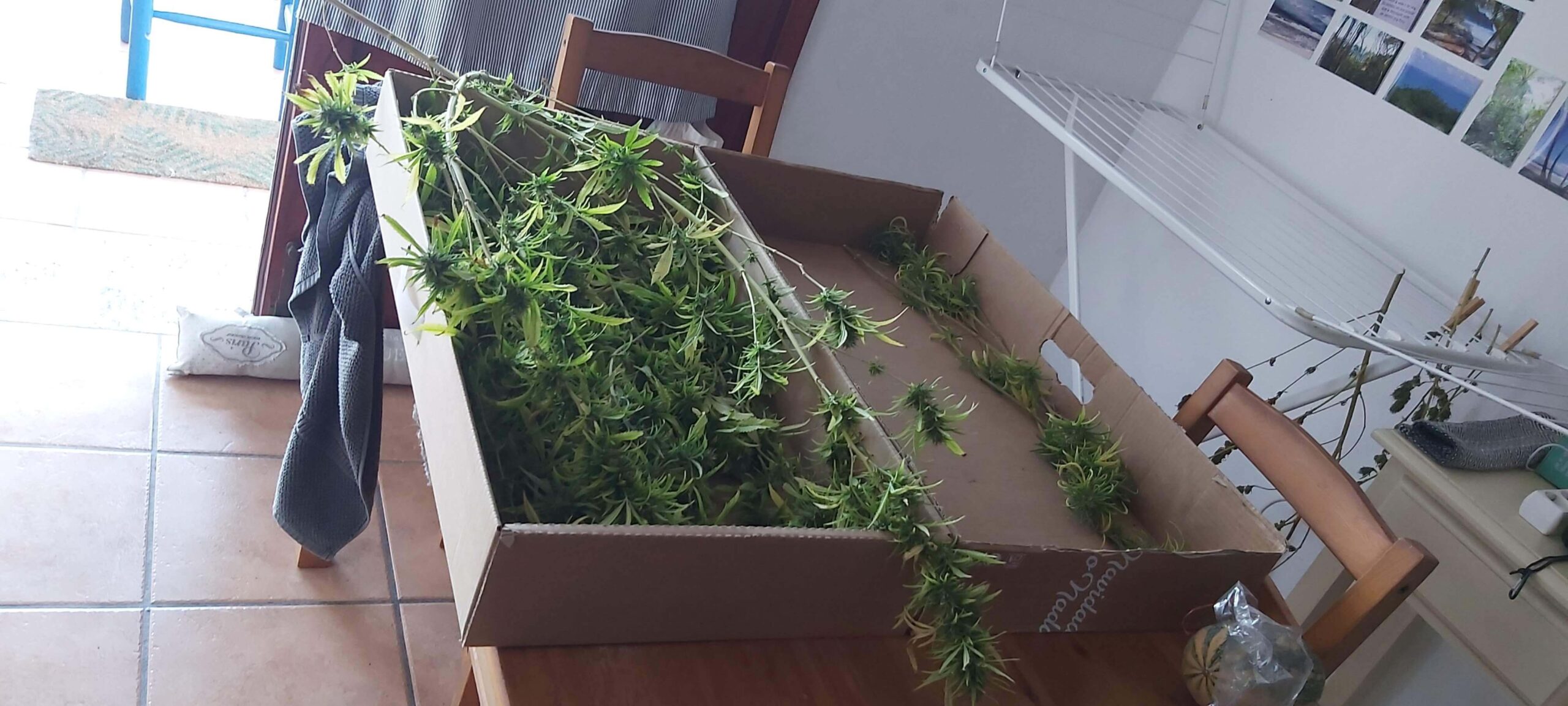
Photo: @Lauramcblonde
Other drugs are also easy enough to come by. It’s best to ask a trusty contact to help you out. Don’t go heading off into dark allies with wads of cash looking to score.
Now for the sex. I mean, how much do you need to know?
Be a whore. Do whatever you want. Just do it safely and don’t be obnoxious about it if you’re getting it on in the hostel.
If you are visiting Ibiza to party, keep in mind the best time to visit Ibiza is definitely between May and September. Plan ahead to make sure you don’t miss any of the top clubs’ big nights of the week.
I will warn you too: Ibiza is expensive as hell. Clubs literally put salt in the bathroom sink water, so you have to buy a EUR 10 bottle of water. Criminal.
Getting Insured BEFORE Visiting Spain
No ifs, ands, or buts, good travel insurance can be a lifesaver – literally. I know it feels like a waste of money for something you probably don’t use.
But believe me, if you need it, you’ll thank your lucky stars. I wouldn’t go anywhere without it.
World Nomads’ mission is to support and encourage travellers to explore their boundaries. They offer simple & flexible travel insurance, and safety advice to help you travel confidently.
They’ve been doing it since 2002 – protecting, connecting, and inspiring independent travellers just like you.
Get a quote below or read our in-depth review!
World Nomads provides travel insurance for travelers in over 100 countries. As an affiliate, we receive a fee when you get a quote from World Nomads using this link. We do not represent World Nomads. This is information only and not a recommendation to buy travel insurance.
How To Get Into Spain
There are two main international airports with flights arriving from all over Europe, North America, and Asia. You can fly into Madrid International Airport (Adolfo Suárez) and Barcelona International Airport (El Prat).
I recommend checking both to find cheap flights into Spain. They also make great places to arrive into Europe.
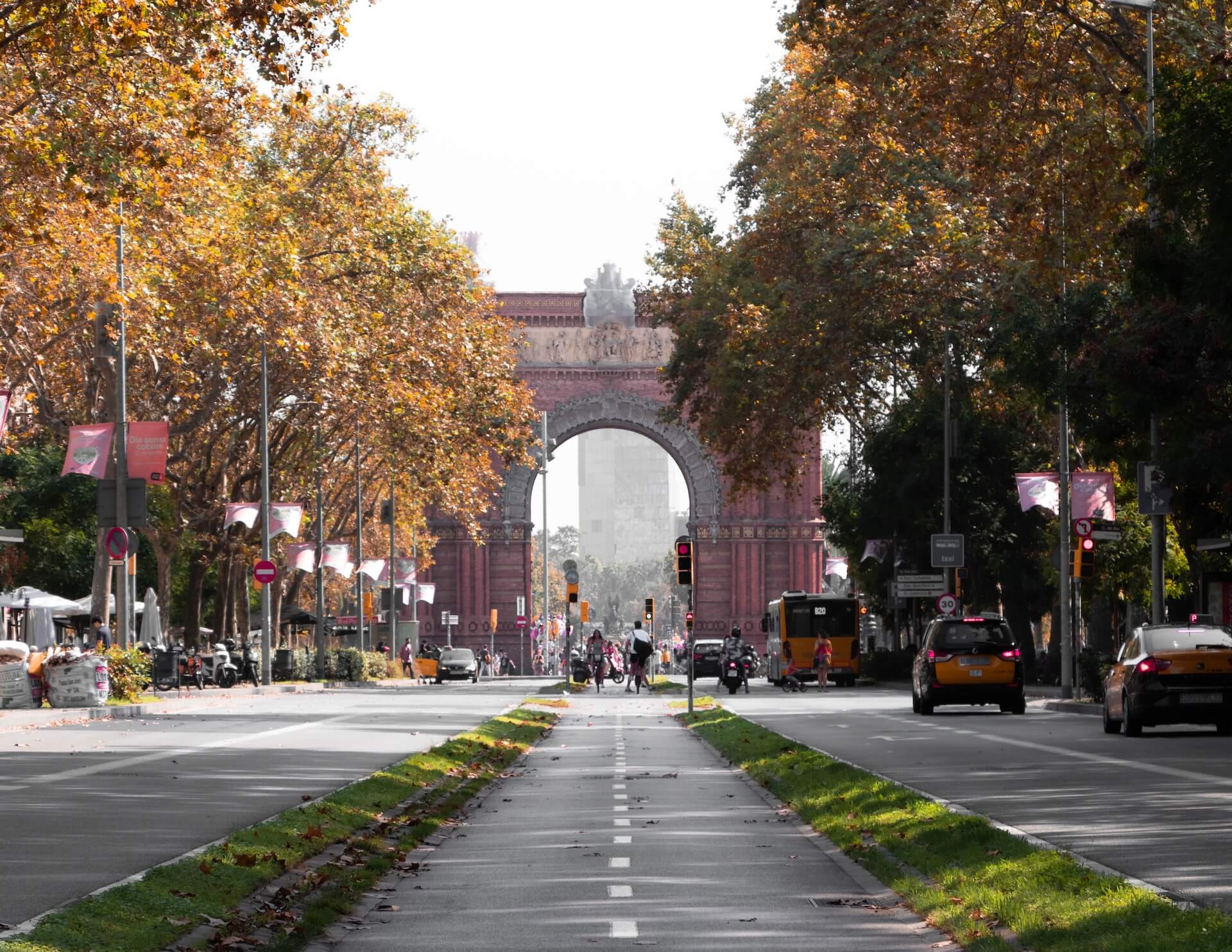
If you’re arriving from other European countries, you won’t need to go through the country’s immigration department as Spain is a Schengen country. There are several airports that connect you to the rest of Europe: Sevilla, Málaga, Granada, and Alicante are just a few of them.
If you use budget airlines, like RyanAir, make sure you check which airport they fly into! For example, Girona (90 minutes from Barcelona) has a small airport that airlines often list as “Barcelona.”
Entry Requirements for Spain
EU citizens get total free reign in Spain. Lucky you.
Many other nationalities need only arrive with their passport and it will be stamped on arrival. You don’t need to pre-apply.
You’re permitted 90 days in the Schengen Zone within 180 days. A lot of long-term travellers and Spanish gap year goers plan their travels around the Schengen visa accordingly.
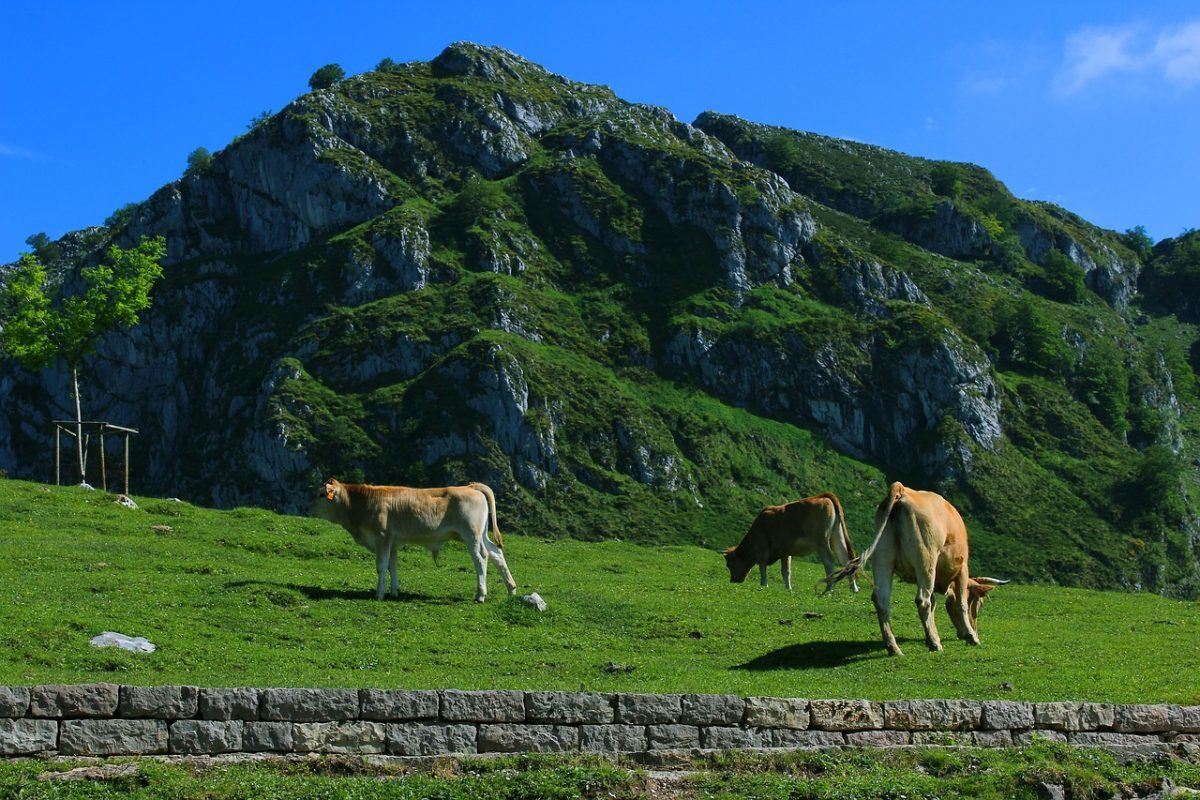
Once 6 months have passed from your original arrival date, the visa resets. Keep an eye on this to avoid trouble for overstaying.
For some countries, you will need to apply for a Schengen visa beforehand. Remember that the Schengen countries aren’t necessarily EU countries and vice versa. For example, you could backpack Spain for 90 days then head over to somewhere like Croatia, Albania, or Bosnia and Herzegovina for 3 months, and then travel back to Spain with a fresh 3-month visa.
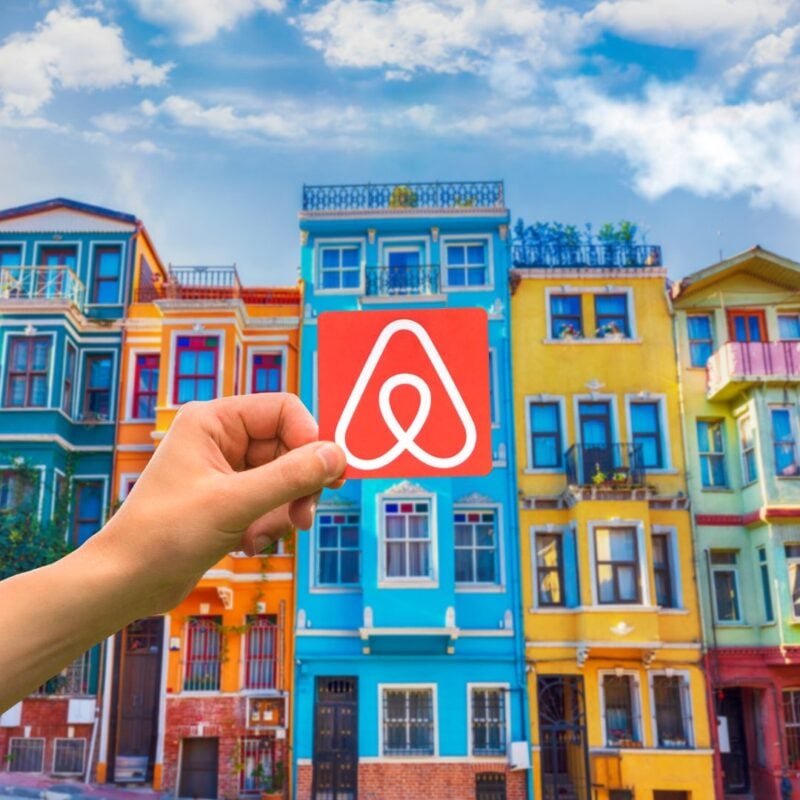
Why stay in a naff hotel when you can stay in a cosy, stylish local house instead? And for half the money too!
Stay somewhere EPIC and save your hard-earned dollars — from houses to barns to castles and caves, there is an Airbnb for every occasion!
Book an EPIC StayHow To Get Around Spain
I absolutely love to backpack Spain by train. It’s fast, comfortable, and convenient. Plus, the views are spectacular.
The only downside is that it’s bloody expensive. It’s really worth getting a rail pass if you’re travelling around Europe by train. They have country passes too which are great to save money for Spain travel.

Photo: @Lauramcblonde
Spanish buses are your budget buddy here. For short or long-distance, your options stretch pretty far here. They are clean and comfortable, and they have reclining seats for a decent siesta.
If you book in advance, you’ll get some really solid deals. Travelling by Flixbus is generally a sure bet.
While backpacking Spain last year, I used BlaBlaCar as my main mode of transportation. This car-sharing app has taken the world by storm – and it’s a great way to get around Spain cheaply and conveniently. It’s usually cheaper and faster than the bus and easy to book last minute.
If you are staying in a city for a while, get the travel card. Weekly travel passes can save you quite a bit of money too and make your life easier.
Don’t bother with taxis. Uber is cheaper and safer.
Budget airlines sometimes offer cheap flights between big cities; though it’s not really necessary. If you’re heading out to the islands, flights are usually cheaper than ferries.
Renting a car is a great way to see Spain at your own pace. You can sort your car rental in just a few minutes.
Booking in advance is the best way to score the lowest price and your choice of vehicle. Often, the best car rental prices are a pick-up from the airport. Make sure you get travel insurance that covers this.
Travelling in Spain by Campervan
No country does romantic vanlife like Spain. You can make the best beaches on the Costa Del Sol into your backyard, make a delicious breakfast with views of the mountains, or travel to all the cities in Spain with ease.
You don’t really need to plan ahead. The weather is generally great. Have I convinced you yet?
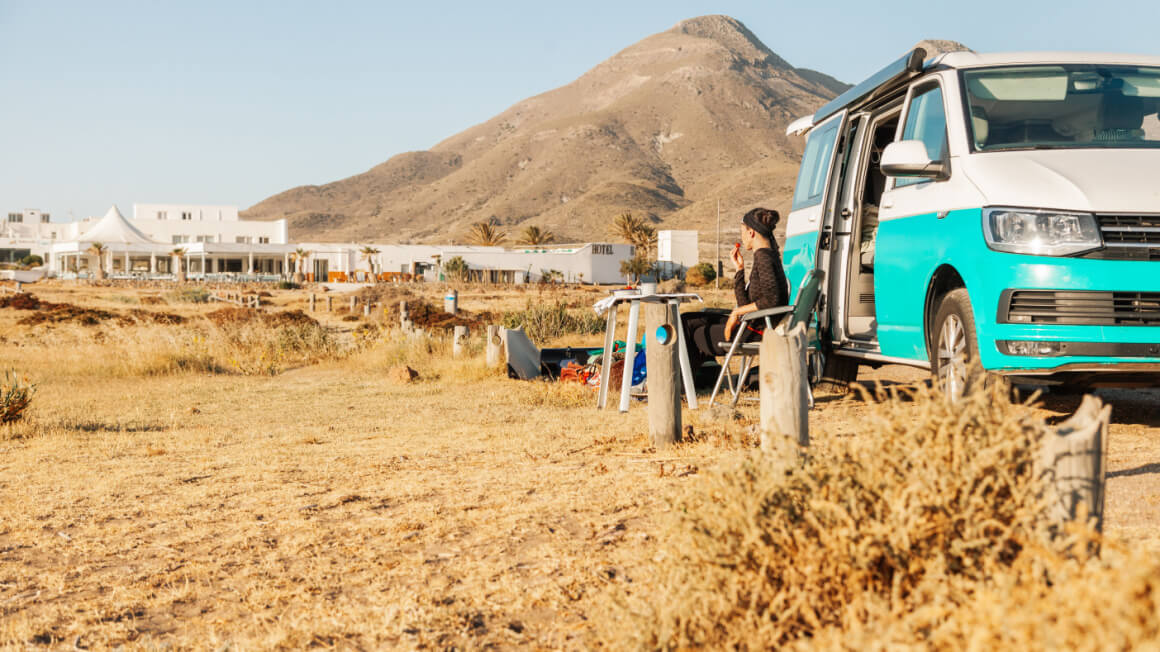
Travelling in Spain by campervan is a fantastic option. Renting a campervan certainly opens doors on your Spain backpacking routes. I can’t think of a better way to spend a few weeks cruising around Spain than in a campervan!
 Use Bookaway to find the best deals on transport – buses, planes, trains, and ferries. It’ll save you a load of time when organising transport and you’ll probably nab an EPIC DISCOUNT too!
Use Bookaway to find the best deals on transport – buses, planes, trains, and ferries. It’ll save you a load of time when organising transport and you’ll probably nab an EPIC DISCOUNT too!
Book your transport on Bookaway NOW. Get the best price for the best ride… then use those savings to buy the best feed in town!
Book Your Transport Here!Hitchhiking in Spain
Hitchhiking is totally doable in Spain, though it’s not as common as in other European countries, like Germany or France. Don’t plan on covering more than 200-300km a day. Try to stick to service stations and get practising your Spanish!
Try to avoid hitchhiking during siesta hours (from 14:00 to 17:00) when there tends to be less traffic. In the summer, this time of day is way too hot to be waiting around anyway.
Onwards travels from Spain
Spain is so well connected within Europe and the world that you have everything at your fingertips. Flights are cheap, especially from Madrid or Barcelona. While you’re here though, backpacking Portugal alongside Spain is a really solid choice.
You can also cross to France in the Pyrenees, or from the Atlantic Coast. A lovely addition to a trip to San Sebastián would be a trip to France’s surf town, Biarritz.
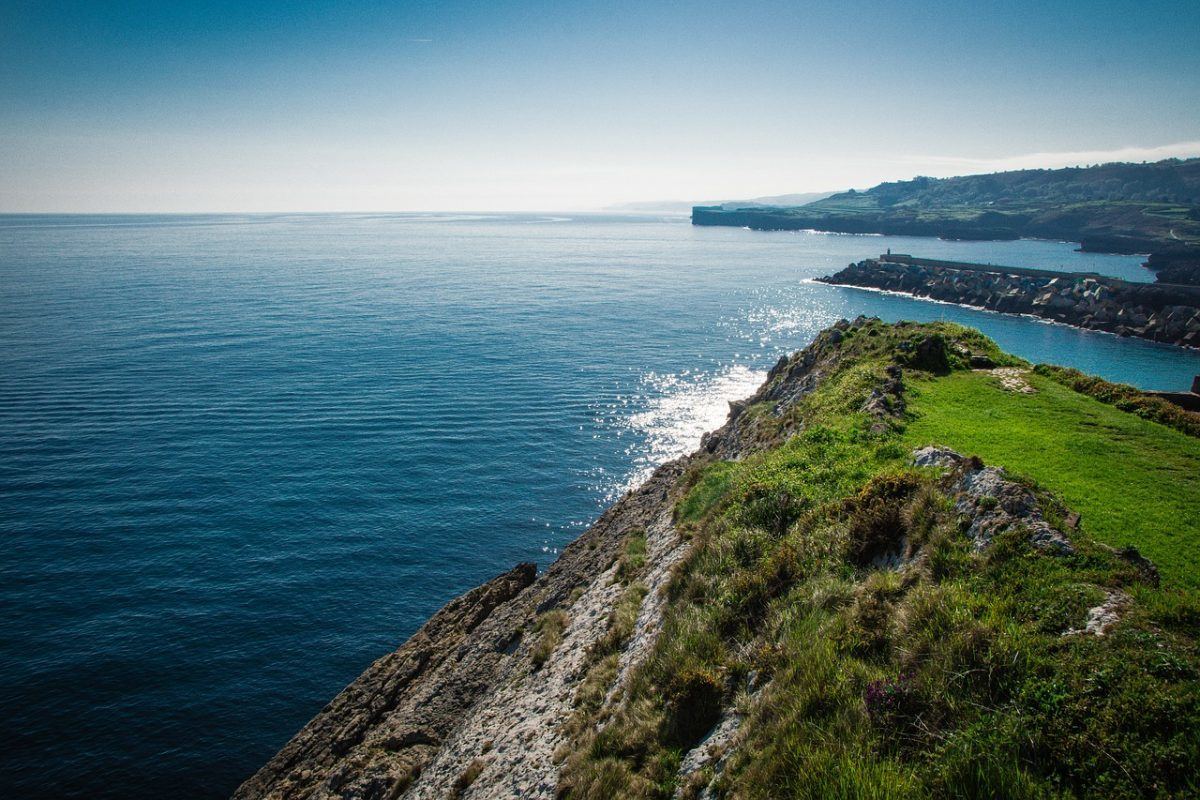
You’re also right next to Morocco here by a cheap flight or ferry. There are several ports that connect both countries.
I really recommend backpacking Morocco too. I was lucky enough to spend 5 months of the pandemic in lockdown there before hopping to backpacking in Spain.
Working in Spain
Working in Spain has never been more popular. They generally offer a great work/life balance.
It is a very tempting place to live and work for travellers. Though, wages in Spain are not as high as other parts of Europe, yet living costs are pretty high in comparison.
If you have one of those lovely EU or EEA passports, working in Spain is as easy as showing up. If you don’t, it’s a little trickier.
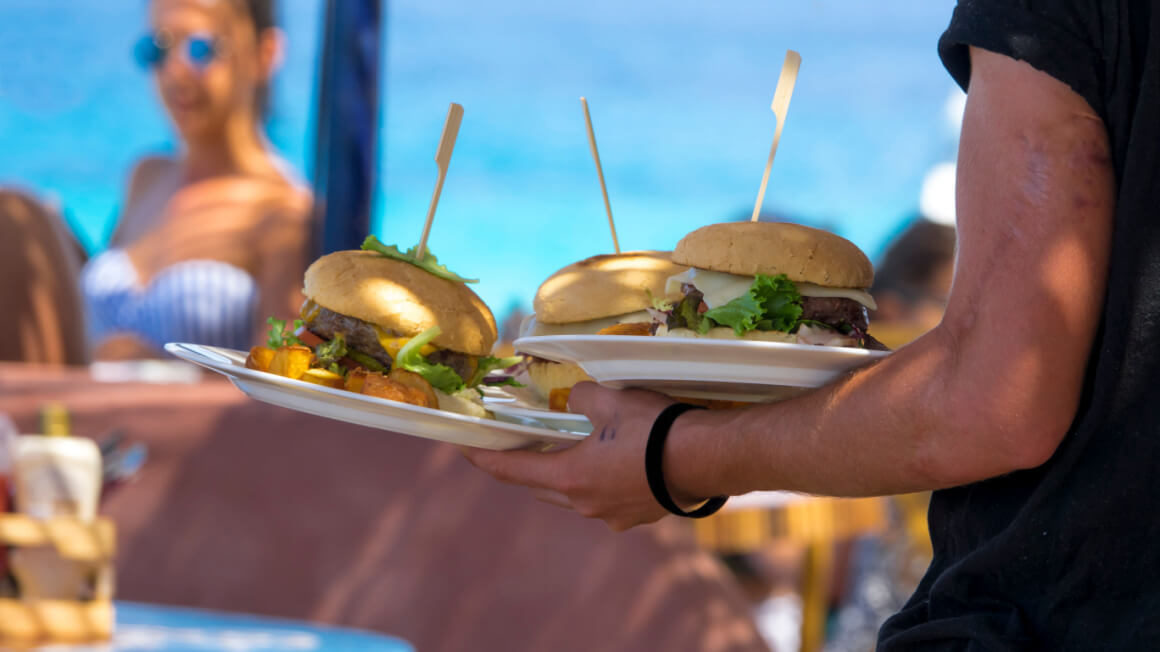
It’s not impossible, but you’ll have a few hoops to jump through. Citizens of Latin American countries often have an easier time obtaining visas on account of former colonial ties.
There are a number of different visa types available including seasonal, long-term, and Au Pair visas. If you’re looking for a shorter-term trip, the Spanish working holiday is a great offer.
There maaaaaay be some options to work without a visa in Spain. (You didn’t hear that from me.)
You’ll have considerably more options if you can speak Spanish too. Lucky for you Global Work and Travel offer the chance to study Spanish in Valencia. You can stay anywhere from 1 to 12 weeks and take your Spanish to the next level.

A new country, a new contract, a new piece of plastic – booooring. Instead, buy an eSIM!
An eSIM works just like an app: you buy it, you download it, and BOOM! You’re connected. It’s just that easy.
Is your phone eSIM ready? Read about how e-Sims work or click below to see one of the top eSIM providers on the market and ditch the plastic.
Buy an eSIM!The Digital Nomad Scene in Spain
Spain is actually one of the best countries for digital nomads in Europe. The internet is trustworthy, it’s much cheaper than other countries in Western Europe, and the weather is just generally better.
Whether you’re a beach bum or a city person, you’ll have all your options open. Spain is even offering a digital nomad visa now, which means you can live in Spain as a digital nomad. There are great hostels for digital nomads too so you can meet cool people at your new office.
Teaching English in Spain
Teaching English abroad is probably the number one job for ex-pat English speakers in Spain. I spent a few years teaching in different areas and although it was quite hard work, it’s actually a good job for Spain with a big market.
You don’t need a degree. Arguably it may help you but I don’t have one and here I am.

A TEFL definitely will help you but, again, it’s not essential. I didn’t have one when I started – I completely blagged it – but after I got one my teaching abilities improved a lot. So yeah, I highly recommend it.
The best course is with MyTEFL. You learn so much and it helps you get on the ladder. The Broke Backpacker readers also get a really decent discount.
Volunteering in Spain
Volunteering in Spain is a great way to experience the culture and do some good in the world. There are lots of different volunteer projects ranging from animal care to agriculture to restoring mediaeval castles.
Note that it’s sometimes necessary to have the right to work in Spain in order to volunteer. This depends on the place.
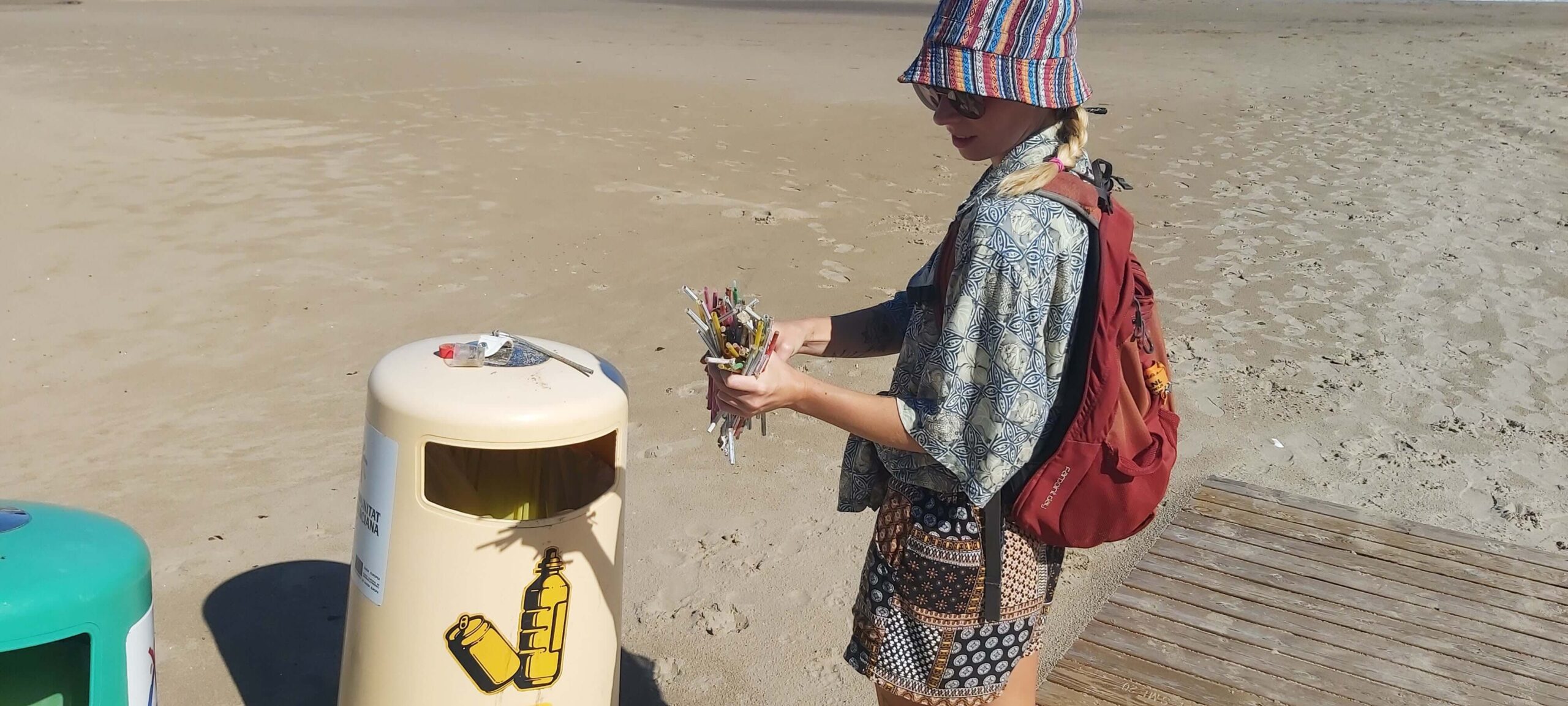
Photo: @Sebagvivas
I recommend using programs run through reputable work exchange programs. As well as having more options it’s just generally safer.
We personally recommend that you signup for Worldpackers. As a Broke Backpacker reader, you’ll also get a discount of $10. Just use the discount code BROKEBACKPACKER and your membership is discounted.

Worldpackers: connecting travellers with meaningful travel experiences.
Spanish Culture
Spaniards are passionate and full of energy. Just go to a flamenco show or a football game and see for yourself. Spanish people work to live, not live to work.
They are mostly night owls too; they eat dinner after 10 pm and parties don’t start until after midnight. Most clubs don’t get going until 3-4 am. It’s pretty common for them to go to work with just a couple of hours sleep.
One time, after spending a night out, my friend and I were waiting for a bus around 6 am. Everyone else was chatting on the steps, so we figured they were waiting too.
We eventually realised they were just hanging out and waiting for the next party to start. Welcome to Spain!
And speaking of sleep, many Spaniards don’t really sleep during the siesta. Businesses close down between 13-16:00 and schools usually break for a few hours too. Outside of the big cities in Spain, you’ll need to plan your visit so you don’t have to wait around for several hours for places to open up again.
Likewise, it’s pretty common that places close on Sundays too. Those lovely whitewashed villages are pretty boring on Sundays.
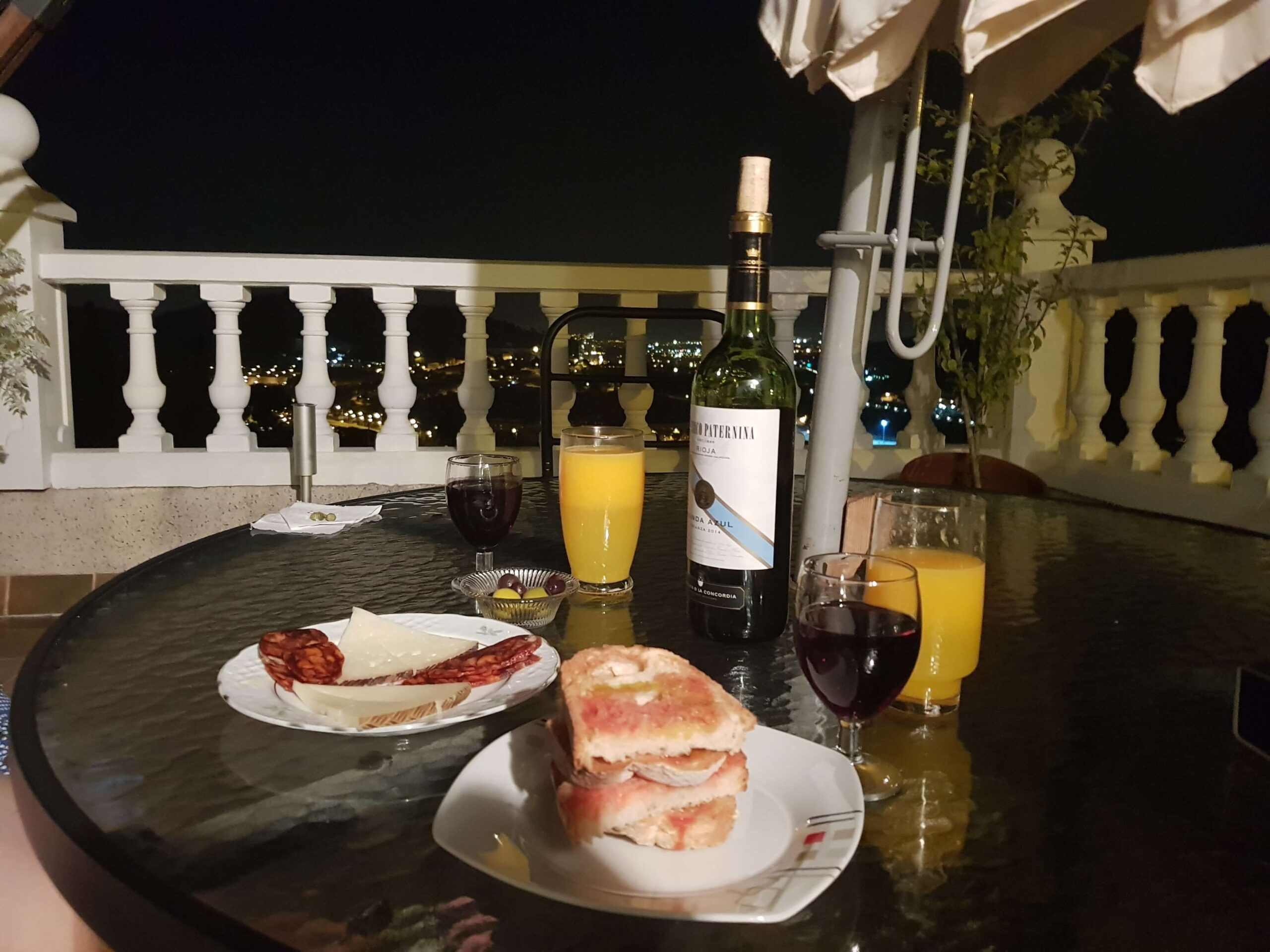
Photo: @Lauramcblonde
Although it’s becoming less prominent, Spain is still quite a religious country. As well as a church on every corner, you’ll see little reminders everywhere.
Spaniards are very family-oriented, and it’s common for kids (or young adults) to live with their parents well into their 20s, and even until marriage. Spanish people enjoy eating big family dinners with everyone chipping in.
In general, I wouldn’t say the Spanish are all that health-conscious either. Many are heavy smokers and heavy drinkers.
Useful Phrases For Travelling in Spain
In Spain, they speak Spanish (dur). But actually, much of Spain doesn’t speak Spanish as their first language.
There are 5 languages: Castellano (traditional Spanish), Catalan, Basque, Galician, and Occitan. Most schools teach both their regional language and Spanish, but many older people in these regions – especially in smaller towns and remote areas – may not speak Spanish.
That being said, you’ll get by everywhere with Spanish. Although you won’t have any trouble getting around Barcelona, Madrid, or other touristic areas with English – I strongly recommend that you practise your language skills. Their English isn’t the strongest, you shouldn’t expect people to speak English all the time, plus you’ll break a lot of barriers!
Hola – Hello
Buenos días – Good morning
Buenas tardes/noches – Good afternoon/night
Cómo estás? – How are you?
Qué onda? – What’s up?
Vale – okay
Una cerveza por favor – A beer please
Dos cervezas, señor – Two beers, sir
(Muchas) gracias – Thank you (very much)
Tienes un fuego? – Do you have a lighter?
Qué hora es? – What time is it?
Donde esta el baño? – Where’s the bathroom?
Perdón – Excuse me/sorry
Me puedes ayudar? – Can you help me?
Sin bolsa de plástico – No plastic bag
Buena onda – Basically translates to good vibes
What To Eat in Spain
Spanish food is famously meaty. Don’t be surprised to see pig legs hanging in shops, houses, petrol stations, garages, you name it. Their jamón (ham) is traditional – especially around the holidays.
Yes, it is possible to survive on jamón, olives, and tomatoes. They even claim (very boldly, I might add) that they have the best olive oil in the world. But there are many more culinary delights…
You already know the paella. You’re going to find the most traditional version in Valencia. If you’re in a notable tourist destination, you’re going to get the tourist version of Paella.
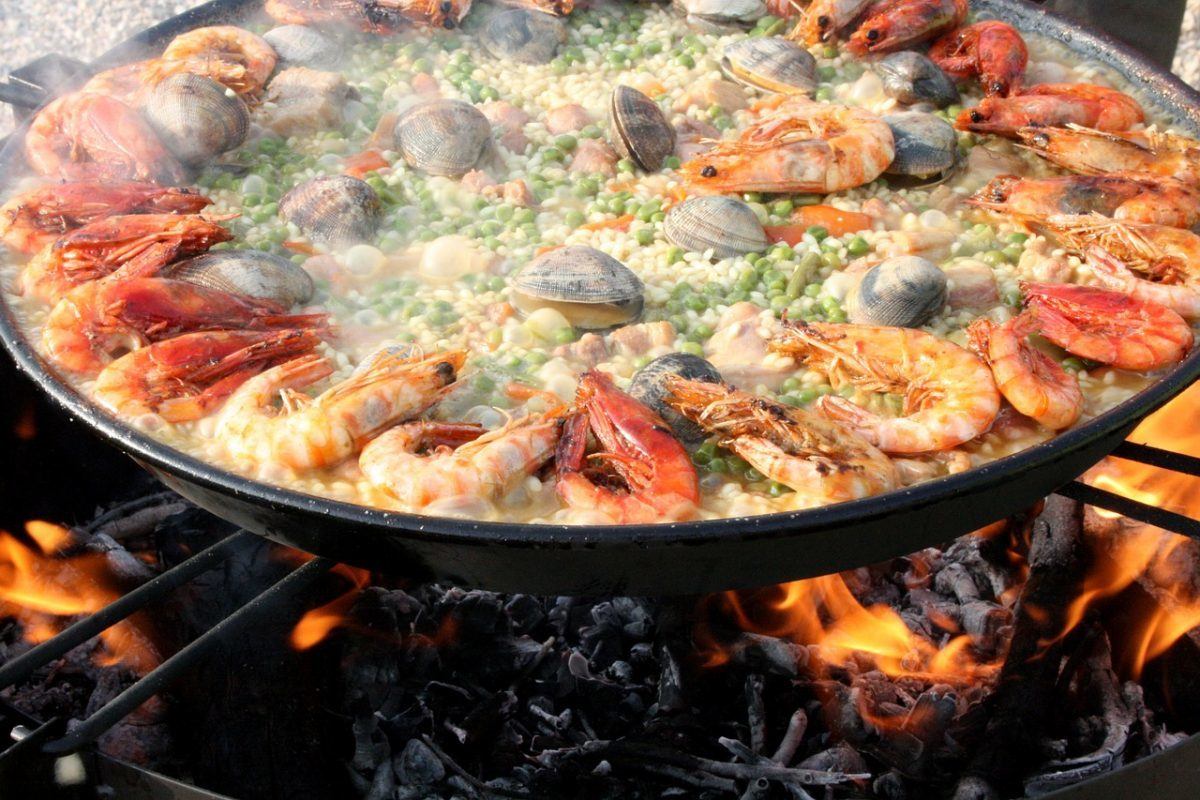
Across the whole country, but especially on the coast, the seafood is amazing and reasonably priced. While living in the Canary Islands, we had freshly caught seafood handed to us every day by local fisherpeople.
Must-Try Dishes in Spain
Paella – Spicey ricey dish.
Tapas – A little bit of everything.
Pinxtos – Like tapas, but only served in Basque Country and better.
Patatas Bravas – saucy potatoes.
Croquettas – hot, crunchy, delicious abuela food.
Churros con Chocolate – Deep fried deliciousness.
Tinto de Verano – The best way to get drunk in summer.
Rebujito – Another great way to get drunk.
Cured meats (jamón, chorizo, salchichón) – Who doesn’t love a bit of dried pig leg?
Pulpo A La Gallega – Boiled octopus + sides.
While backpacking Spain, what you eat is almost as important as when you eat. Breakfast is eaten late and generally consists of a quick coffee and snack, tostada, or maybe even a churro with chocolate. Lunch is eaten between 2 pm and 3 pm, and dinner from 10 pm onward.
Between 2pm and 4pm, most shops in Spain shut down the siesta means people can have lunch at home with their families. Most of Spain is unbearably hot at this time, and who wants to work in the heat!?
Most people will stay up late into the night – even children. It’s common to have dinner at midnight, especially on weekends.
A Brief History of Spain
While backpacking Spain, it’s important to be aware of Spain’s complex history.
Ancient History
Iberians, the Phoenician Empire, and, later, the Celts came before Ancient Rome conquered Spain. Rome left four powerful elements: the Latin language, Roman law, the municipality, and the Christian religion. After the fall of the Roman Empire, at the beginning of the 8th century, the Arabs ruled for eight centuries.
Moorish Arrival
You can’t miss the imprint of Muslim rule while backpacking Spain. There are thousands of buildings in the South of Spain dating back to Moorish times.
The Golden Age ended with a civil war. The Christian Reconquest ended in 1492.
Christian Revival, the Spanish Inquisition, and the Decline
1469, the marriage of Catholic Monarchs, Isabella of Castile and Ferdinand of Aragon, marked the beginning of Catholicism’s success over Spain. They conquered the last of the Arabs.
In 1492, they sent Christopher Columbus to “conquer” the Americas. Over the next two centuries, the Spanish Empire became a world power – and massacred nations. The Spanish Inquisition focused on removing Islam’s policies and converting Jews to Christianity.
This is why pork and jamón have strong cultural connections in Spain. Hanging pig legs showed that you were not a Muslim or Jewish “traitor”. Fernando and Isabel eventually exiled all Jews who refused to convert – or killed them.
Their empire ended with a less-than-graceful fall from power in the 18th century. In the 19th century, Spain was divided between liberals and conservatives. Powers teetered with internal struggles and lost their colonies.
20th Century: Civil War, a Dictatorship, and Democracy
A never-ending power struggle caused growing violence and social conflicts – leading to a military uprising and civil war. Both sides committed massacres and reprisals.
1936, General Franco became Spain’s new dictator. Despite Franco’s support of Hitler, Spain remained on the sidelines during WWII. His forty-year dictatorship marks a time of oppression and conflict in Spain.
Franco’s death in 1975 ended the era of this dictatorship and the monarchy returned. King of Spain, Juan Carlos I de Borbon y Borbon established a western-style democracy with free elections and no official religion in 1977.
Between 1980 and 1982, the Catalonia, Basque Country, Galicia and Andalucía regions approved statuses for self-government. In 1986, Spain joined what is now the EU.
Some Unique Experiences in Spain
While you’re at it, you should know of some special experiences while you visit Spain.

Things go wrong on the road ALL THE TIME. Be prepared for what life throws at you.
Buy an AMK Travel Medical Kit before you head out on your next adventure – don’t be daft!
Buy on REITrekking in Spain
With two main mountain ranges, hiking opportunities in Spain are strong! Trekking in Spain and walking the Camino de Santiago are life-changing experiences.

Walking El Camino de Santiago
What began as a pilgrimage trail hundreds of years ago is now also journeyed by travellers all over the world. It’s one of the world’s most famous walks. If you have the time, I highly suggest walking El Camino while backpacking Spain.
The best times to hike El Camino are May and September. July and August are crowded and hot.
There’s very little technical walking on the main Camino routes – you’ll mostly be on well-maintained tracks or pavement – so you don’t need much. The most important thing to bring is a good pair of hiking boots (well broken in), a refillable water bottle, and layers – especially if you are hiking during shoulder season.
Otherwise, rain is rare. Aim to pack for your hike light, as you will stay and eat in towns along the way.
El Camino Routes
- Camino Francés (the French Way): The Camino Francés starts in St Jean Pied-du-Port. It’s the most popular with varied scenery and good infrastructure.
- Camino Primitivo (the Original Route): The Camino Primitivo is the most direct route from Oveido to Santiago (passing through Lugo). It rejoins the Camino Francés about 40 miles from Santiago. The walk is about 180 miles long and is quite challenging with hill climbing and erratic weather.
- Camino del Norte (the Northern Way): The 510 miles of pathway will take about 35 days. Distances between towns are reasonable but accommodation is sparse so book ahead. This route starts in Irún on the border with France and travels west through Bilbao, Santander, and Oveido.
- Camino Portugués (the Portuguese Way): Starting in Lisbon and passing through Porto and Poneverdra. it is 380 miles long, and reasonably flat. However, you will walk alongside motorways.
- Camino de Finisterre (the Finisterre Way): Instead of finishing your walk in Santiago, continue on to Finisterre, whose name literally translates to “end of the world”. The route adds on 55 miles with an optional extra 18-mile walk to Muxia afterwards.
Hiking in the Picos de Europa
Picos de Europa translates to Peaks of Europe. This national park is located in the Asturias region, so you can expect lush green scenery.
Hiking and Skiing in the Sierra Nevadas in the South of Spain
No, I’m not talking about the American pale ale beer. The original Sierra Nevada mountain range is located in the South of Spain.
On a clear day, you can see this snow-capped mountain range from Granada. This is the largest of Spain’s national parks, with plenty of hiking and climbing options.
During winter you can also ski in the Sierra Nevadas for ridiculously affordable prices.
Hiking and Skiing in the Pyrenees of Spain
This mountain range is close to Barcelona and borders France. There are plenty of hiking and skiing opportunities here. Parque Nacional de Ordesa y Monte Perdido is full of limestone peaks and deep valleys.
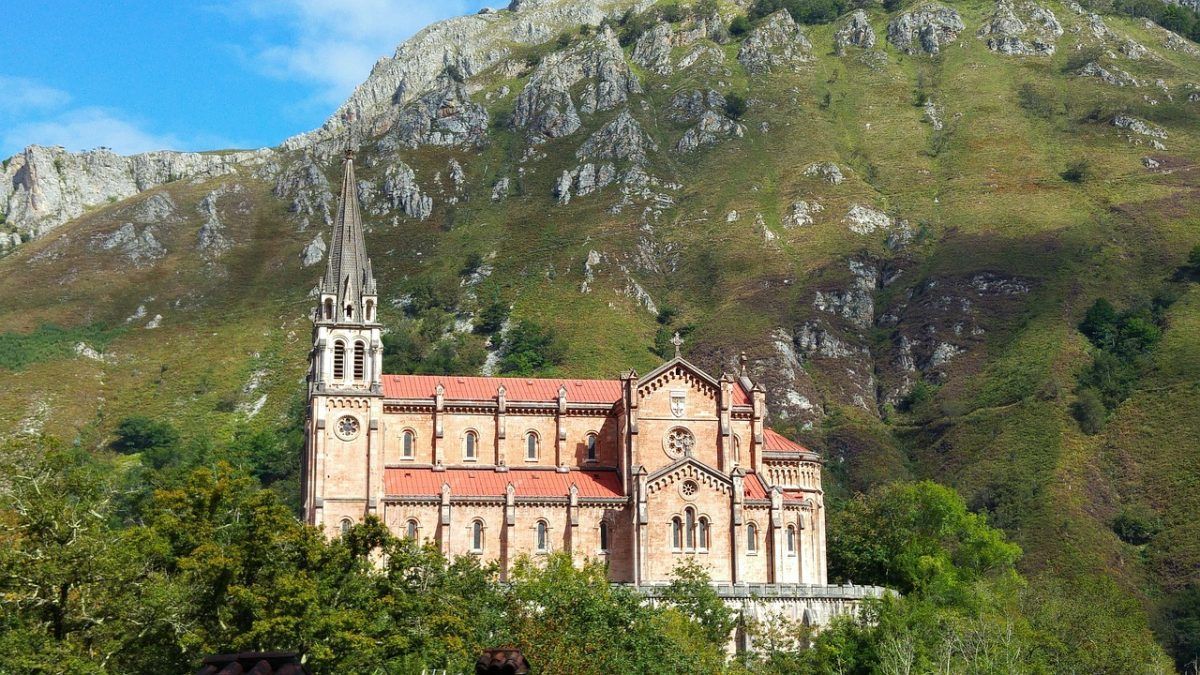
Joining an Organised Tour in Spain
For most countries, Spain included, solo travel is absolutely sick. That said, if you are short on time, energy, or just want a little push to meet some other travellers, joining an organised tour is a good option.
The tours help you see a lot more of Spain quickly and without the effort that goes into planning a backpacking trip. However, not all tour operators are good – that is for sure.
But G Adventures is a solid down-to-earth tour company catering to backpackers just like you, and their prices and itineraries reflect the interests of the backpacker crowd. You can score some pretty sweet deals on epic trips in Spain for a fraction of the price of what other tour operators charge.
FAQs About Backpacking in Spain
Final Advice Before Backpacking Spain
If you haven’t noticed by now, I love Spain! I’ve been so well received there over my travelling years – and I’m far from seeing the last of it.
I’m so happy to recommend it for every kind of traveller: old, young, newbie, solo, groups, lovers, you name it. Backpacking Spain allures anyone who appreciates history and rich culture, a hearty food and drinking scene, and year-round beautiful beaches and mountain ranges.
From my first experience in that all-inclusive hotel that I barely left to passing a pandemic to bouncing around charming villages and remote beaches with my backpack, I can safely say, you can make your Spain itinerary uniquely yours. There really is something to excite everyone. I urge anyone who travels to Spain to visit different regions (time permitting) and experience contrasting cultures.
After a few weeks of backpacking Spain, you’ll soon settle into the laid-back attitude. You’ll be staying out late on a school night, eating dinner at midnight, and appreciating that siesta.
Have fun but don’t lose yourself. Go easy with your physical and mental limits and stay aware of your surroundings.
Although serious crime poses little risk, petty crime isn’t uncommon – especially in the big cities. Plus, you’re still a guest in this country so treat it with respect and you’ll be equally rewarded.
Try your best to speak Spanish. It will make all the difference in your experience. You’ll get to know the people and it’ll help you get around.
Each region of Spain has its own subculture with different languages and traditions. No one expects foreigners to speak Basque or Catalán, but you’ll notice the light in the locals’ faces if you can even say a few words.
Vamos. You’re ready for backpacking in Spain!
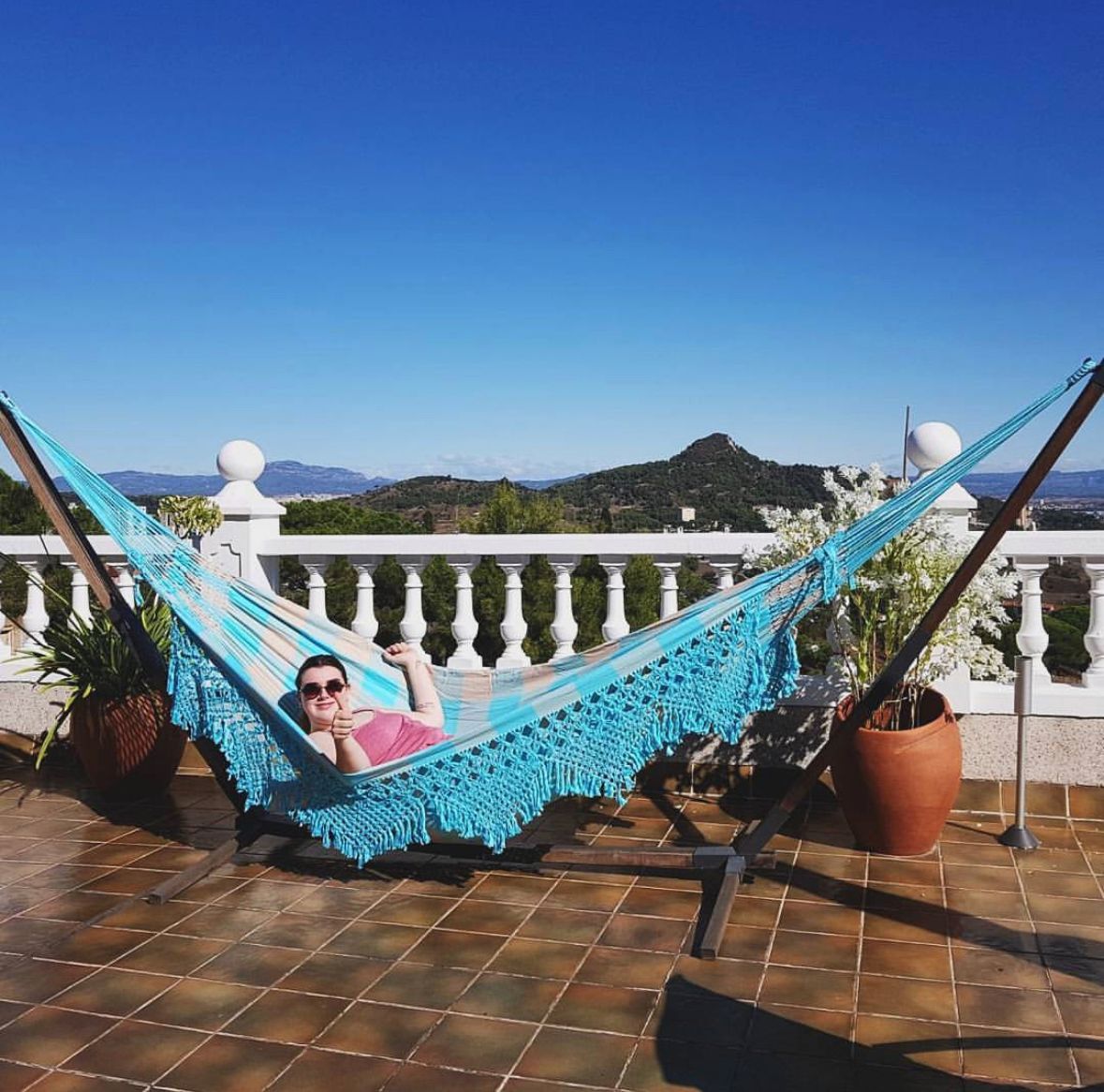
Photo: @Lauramcblonde

And for transparency’s sake, please know that some of the links in our content are affiliate links. That means that if you book your accommodation, buy your gear, or sort your insurance through our link, we earn a small commission (at no extra cost to you). That said, we only link to the gear we trust and never recommend services we don’t believe are up to scratch. Again, thank you!


